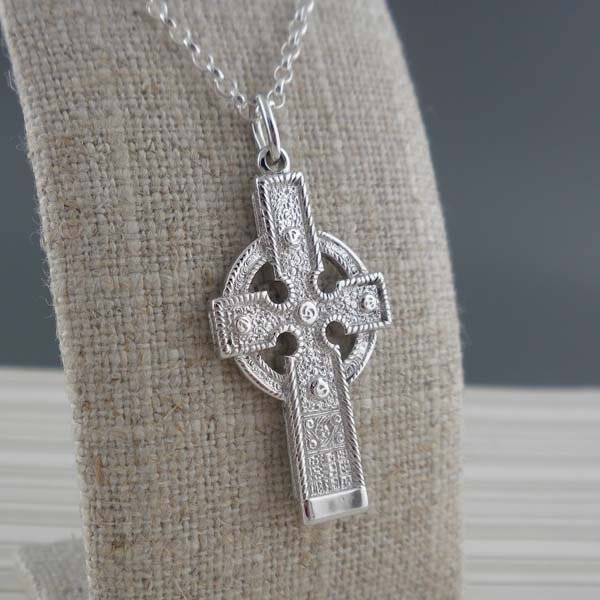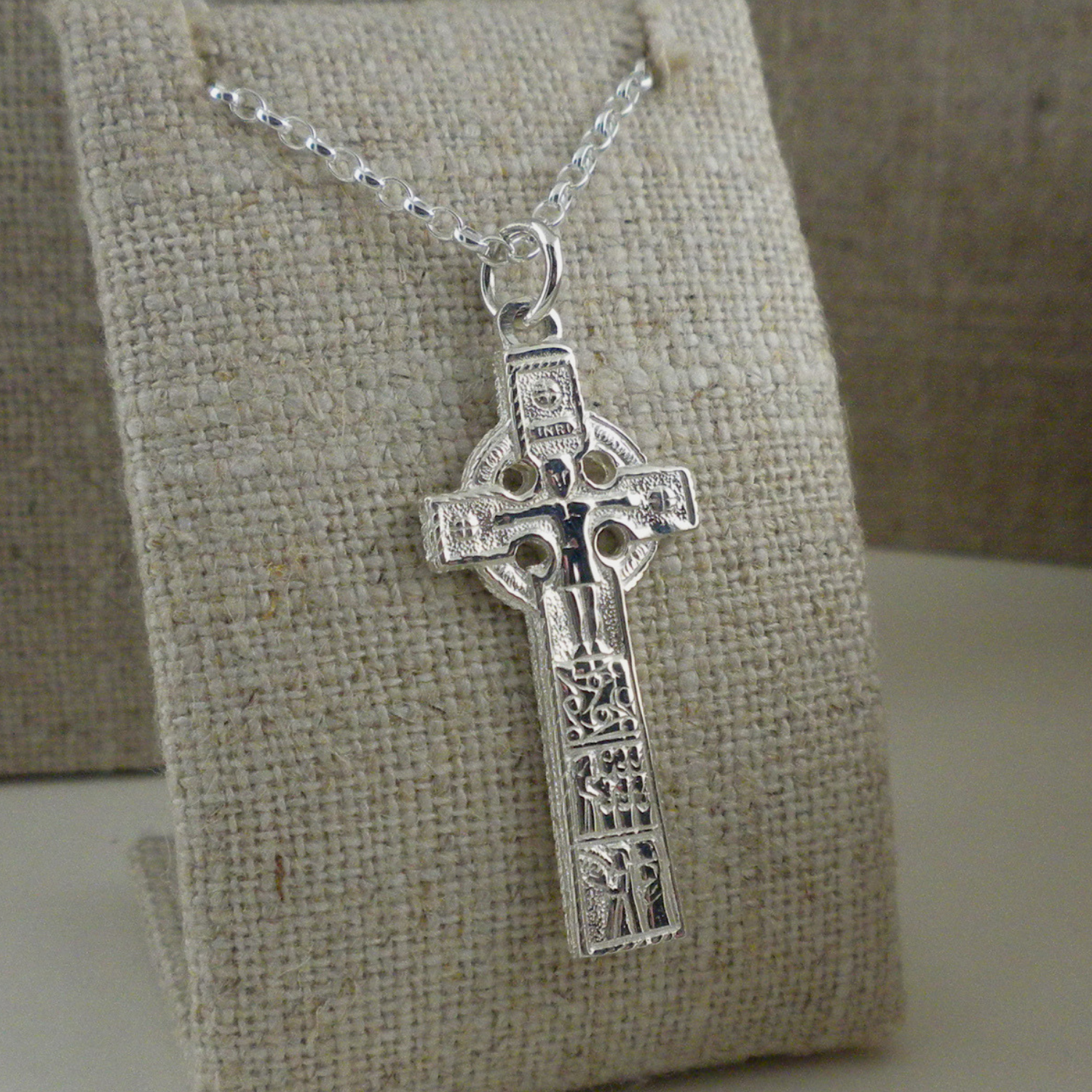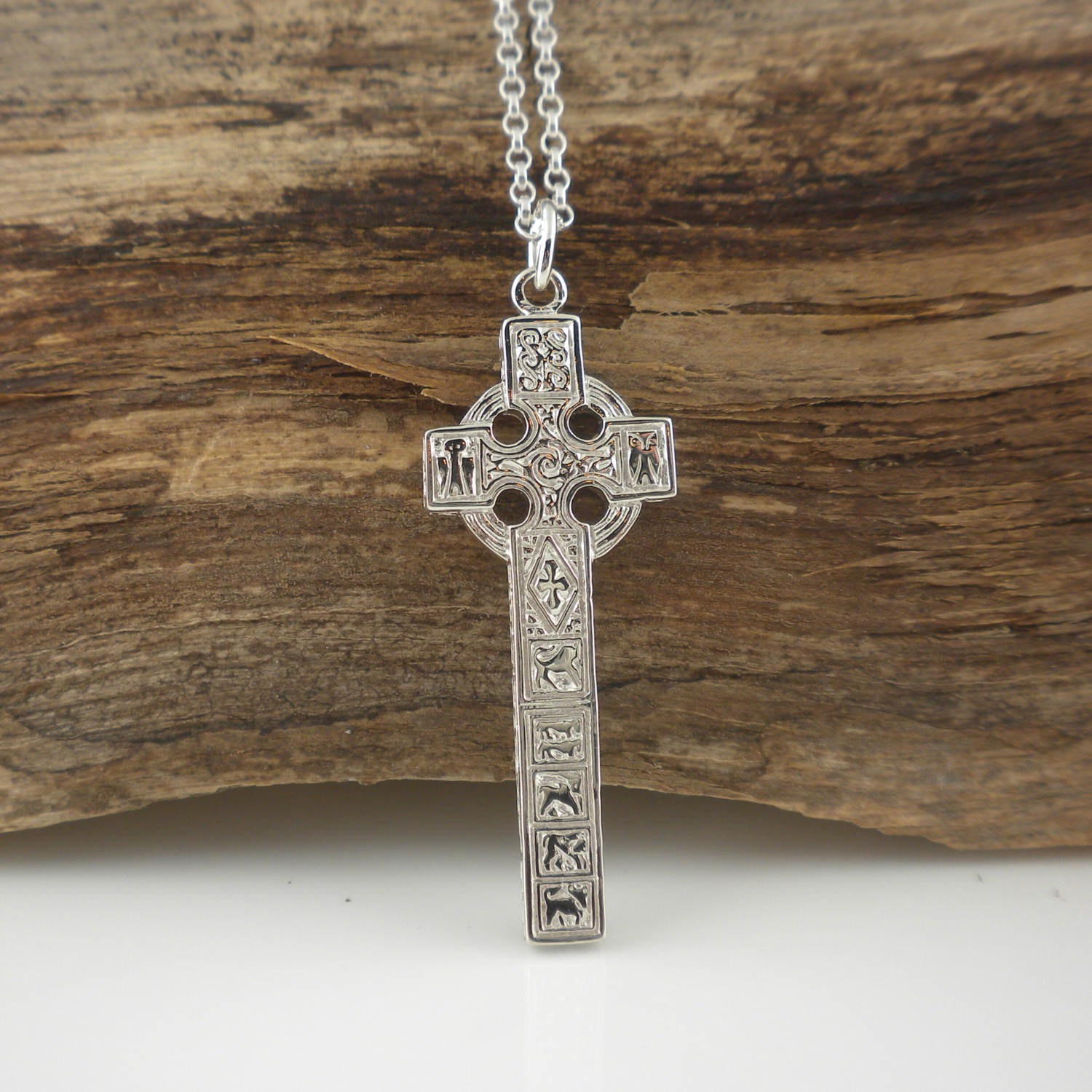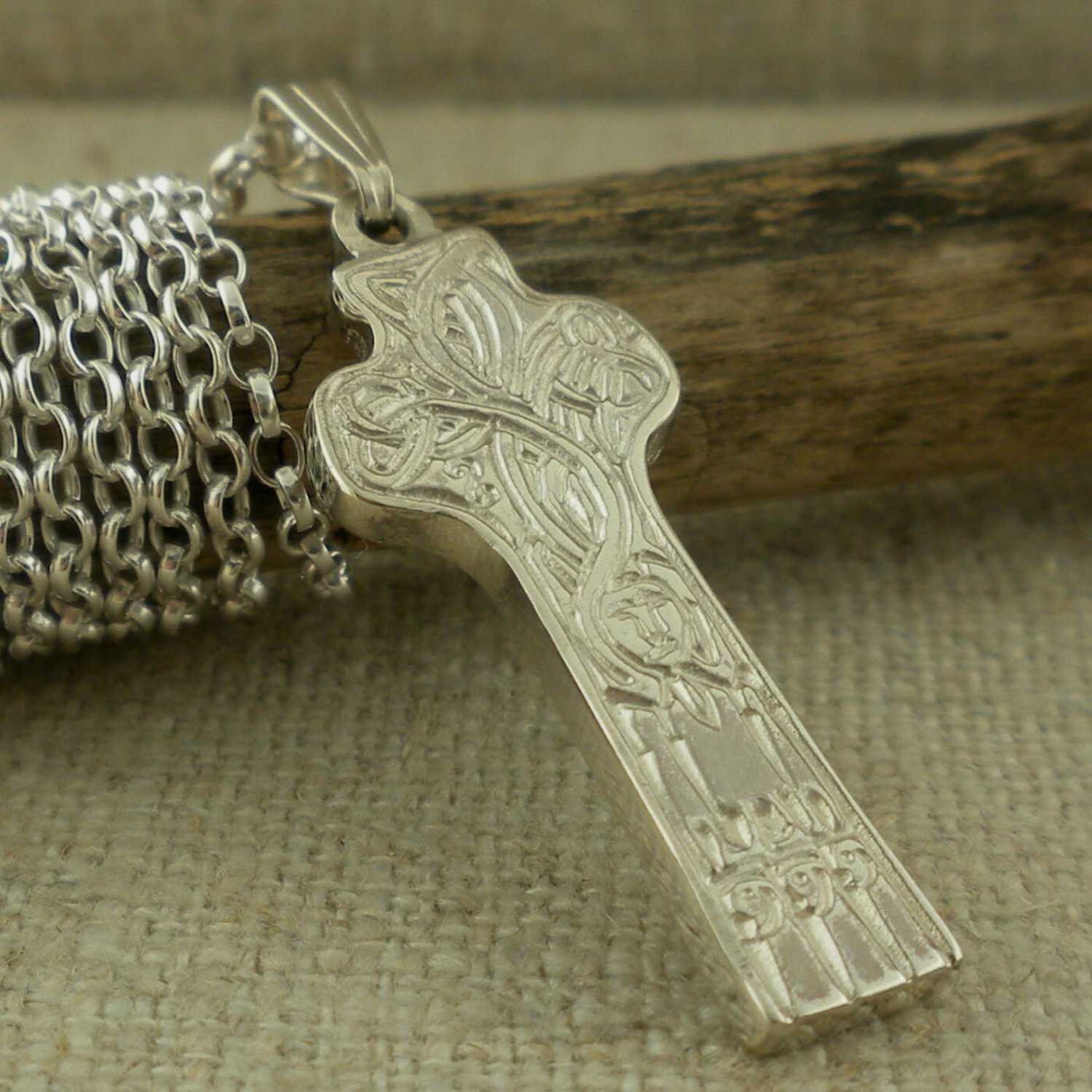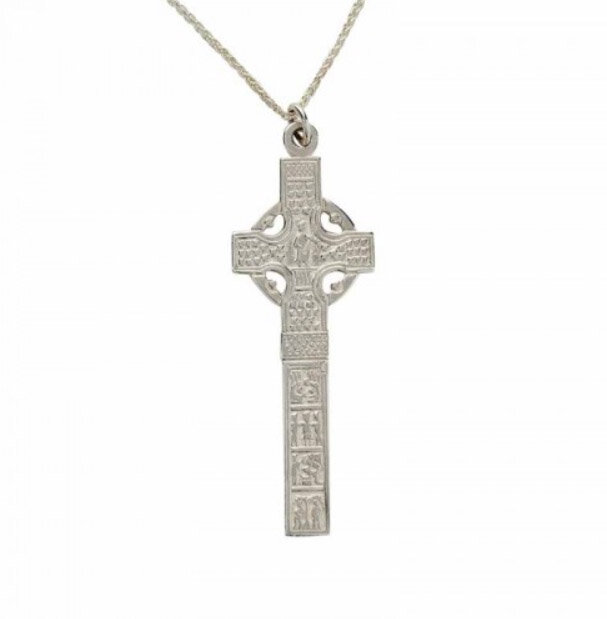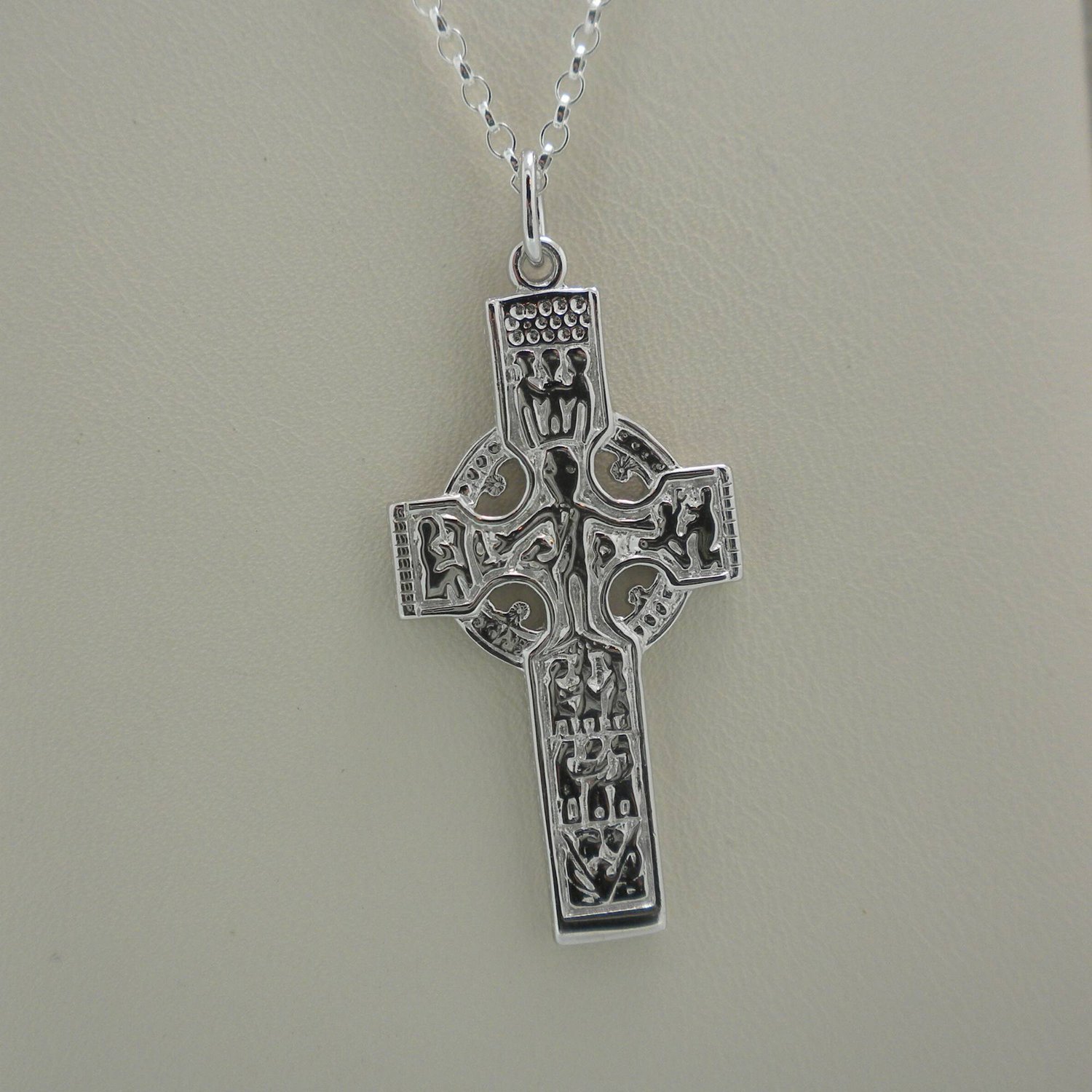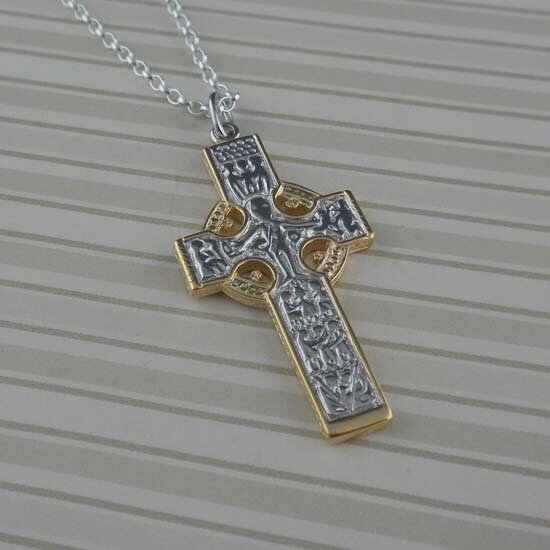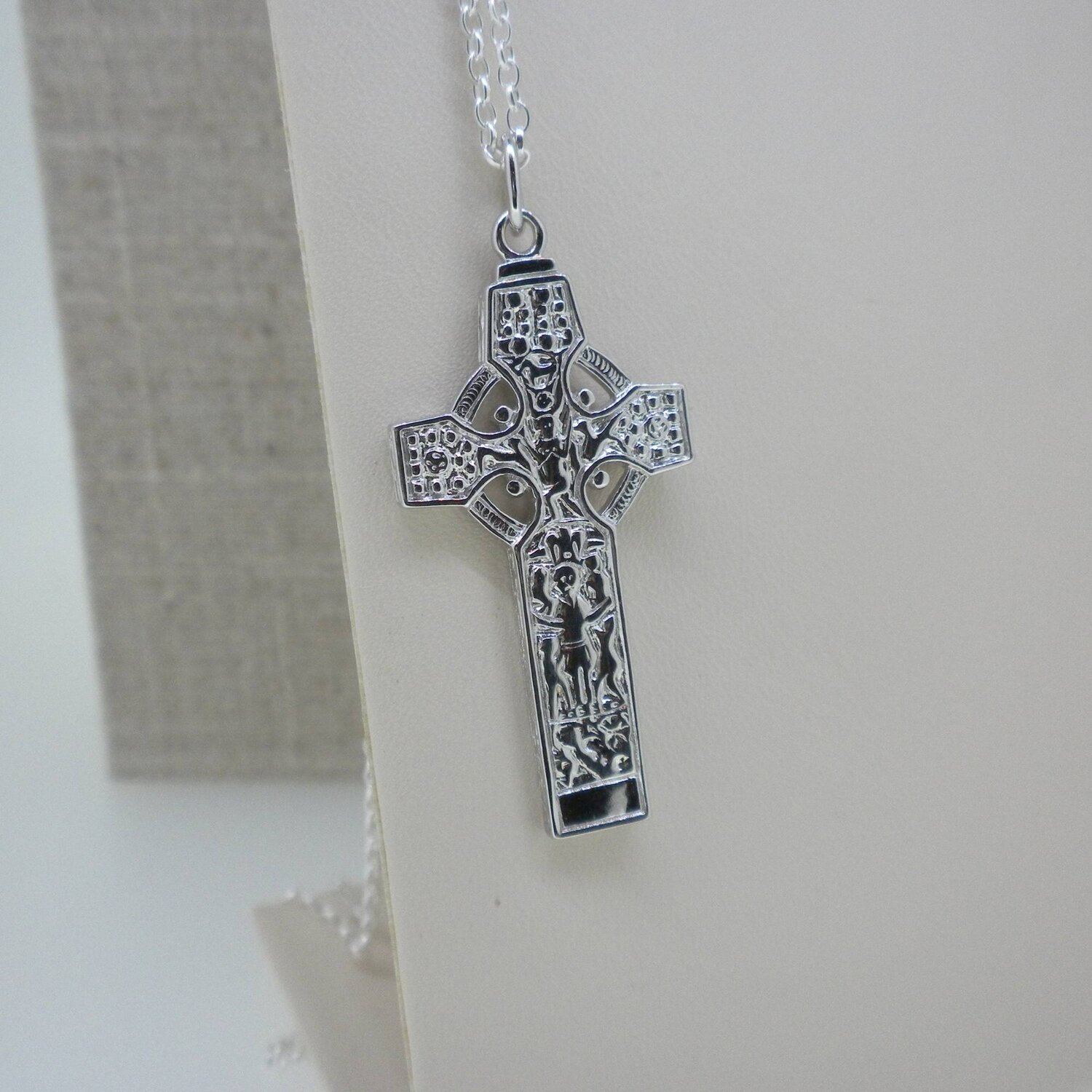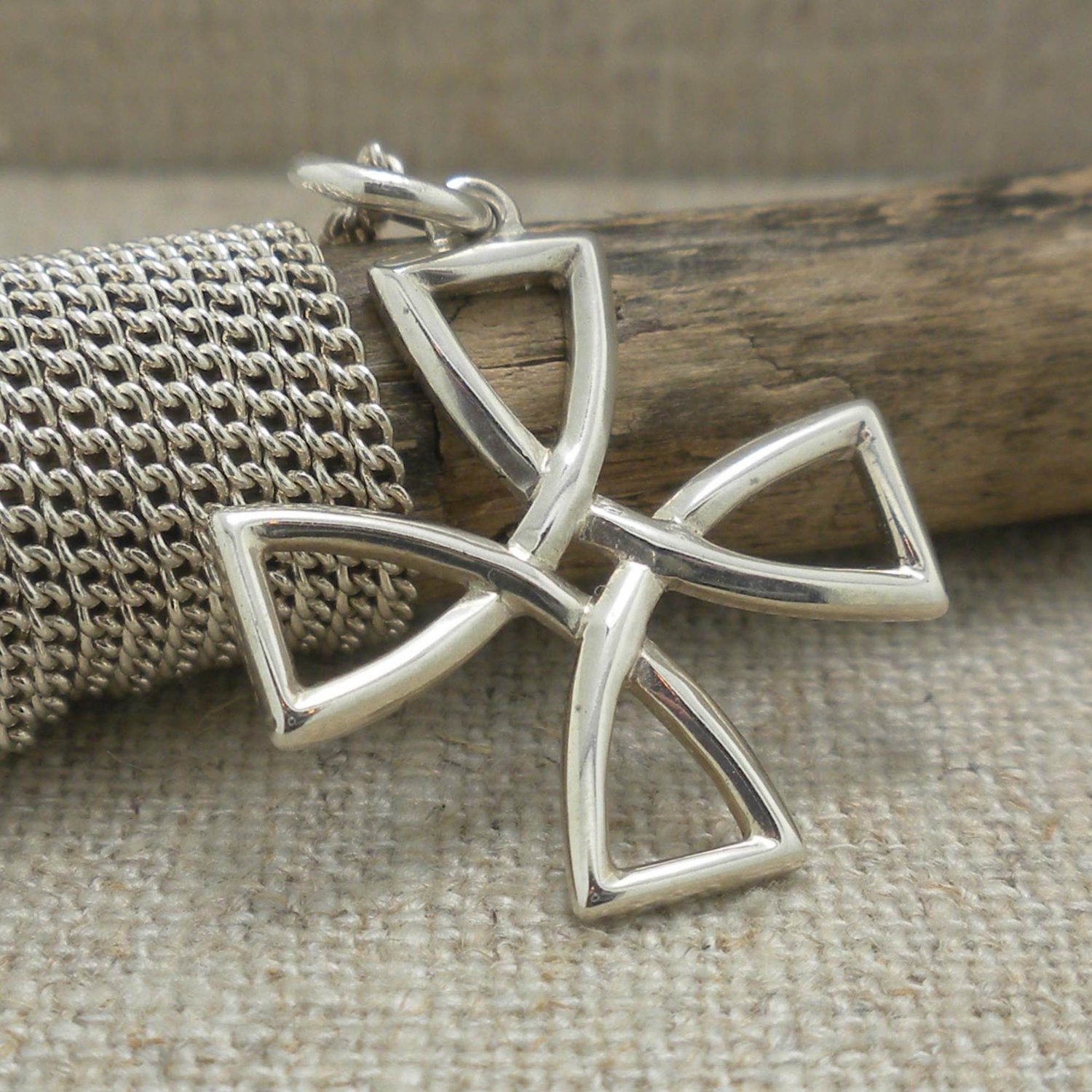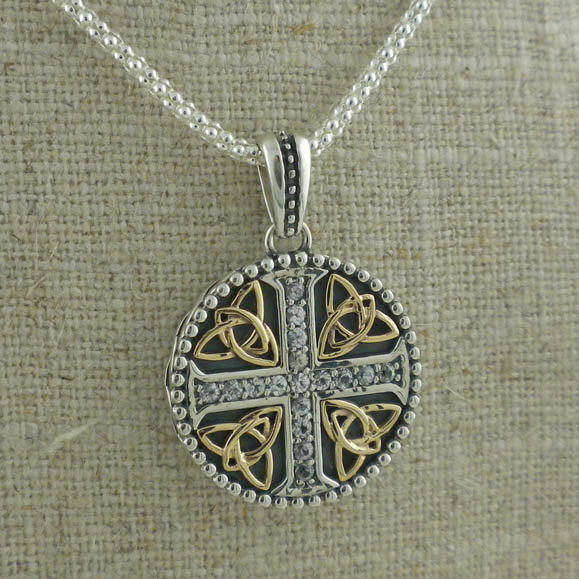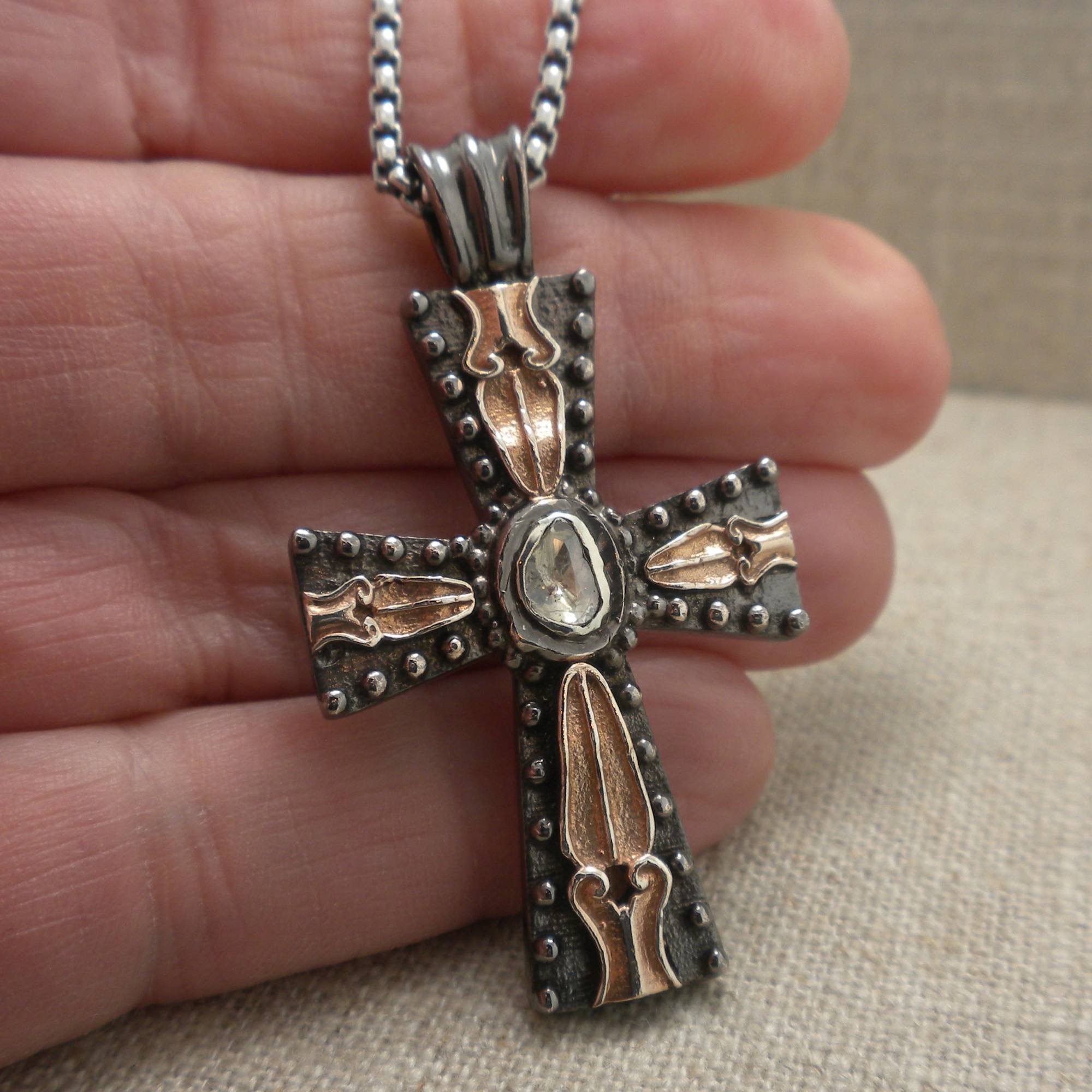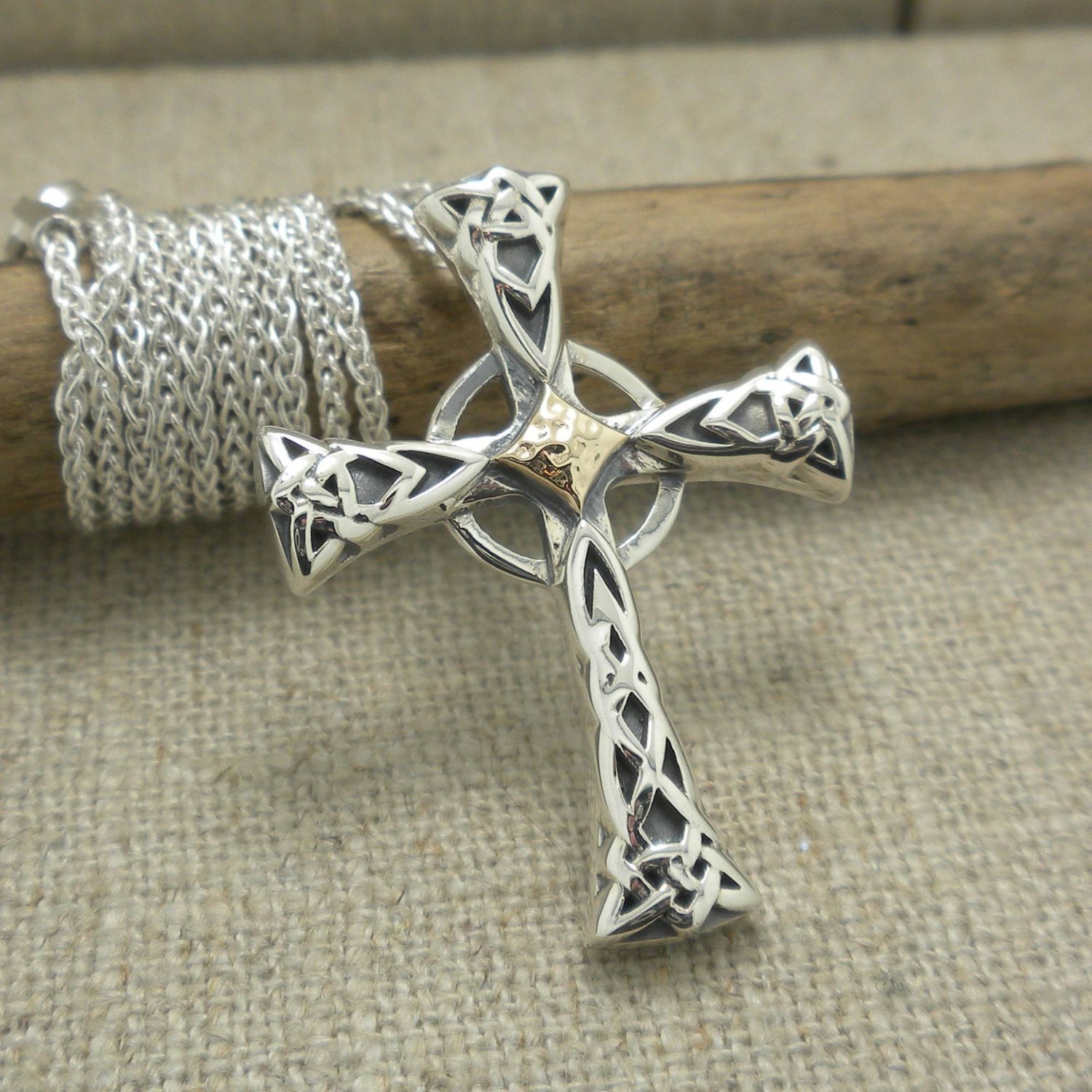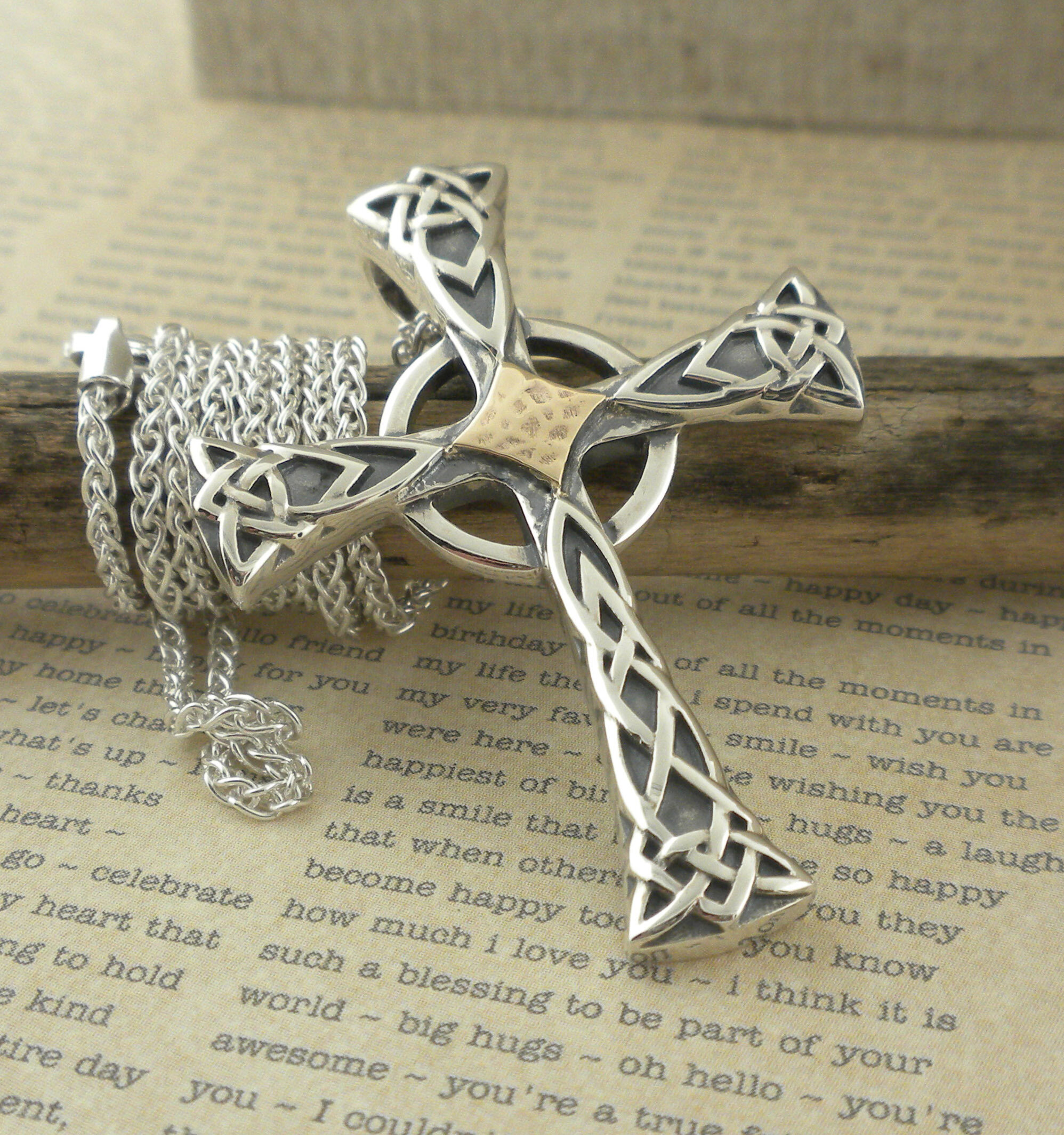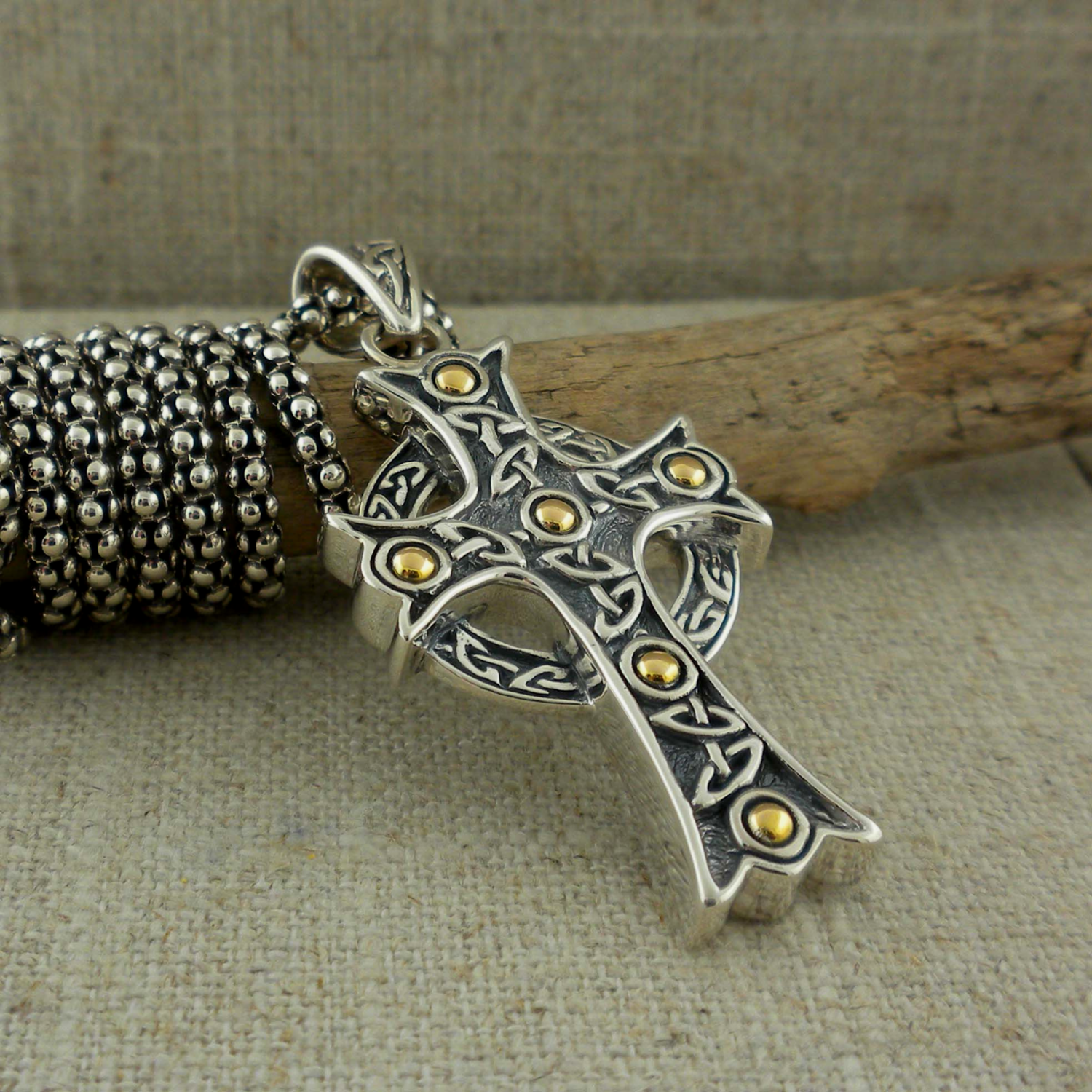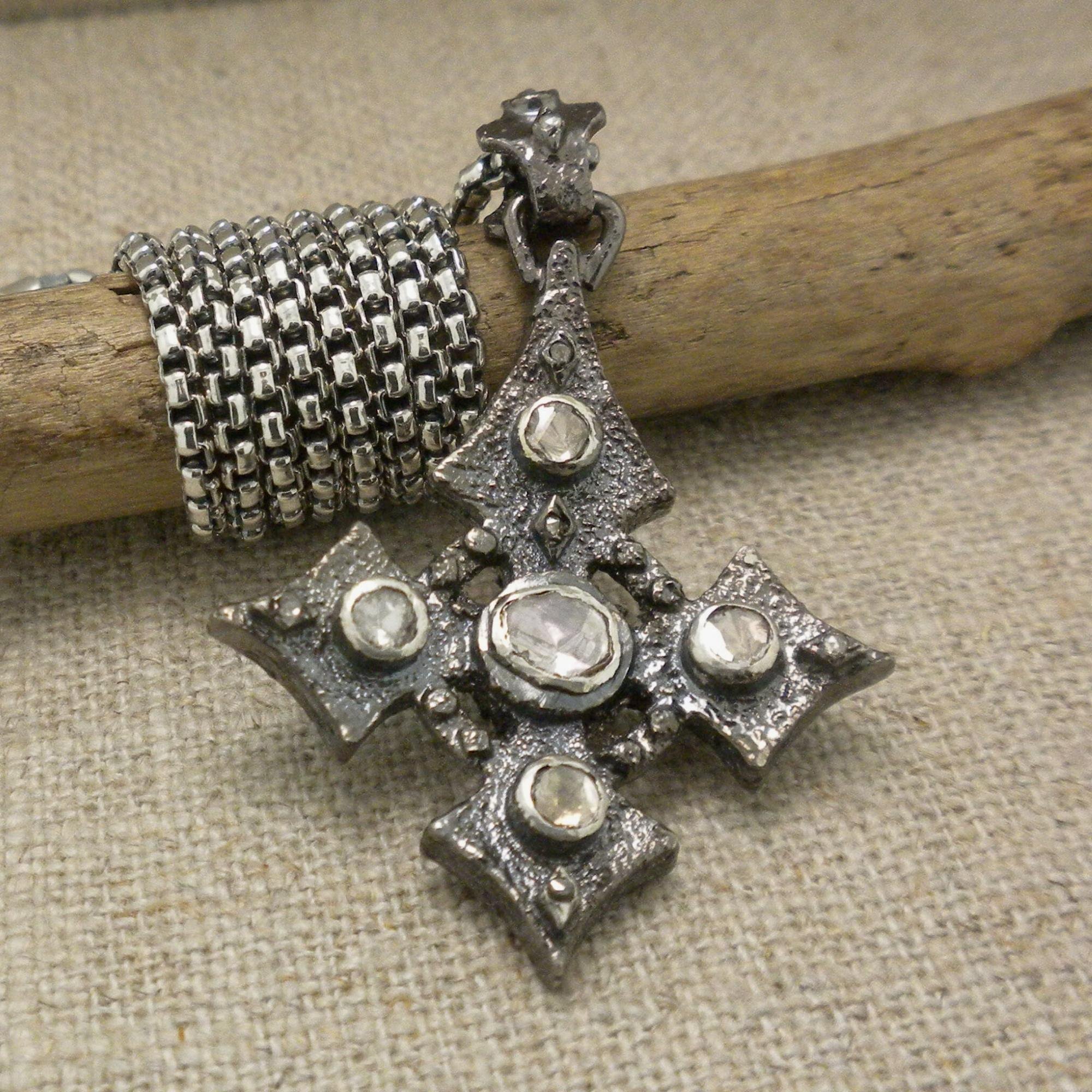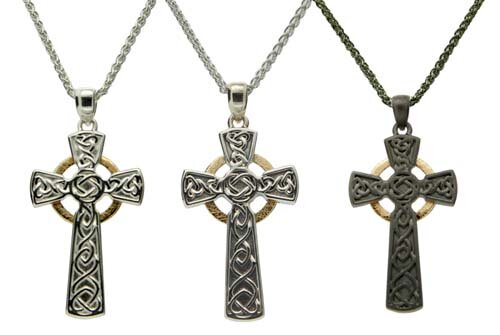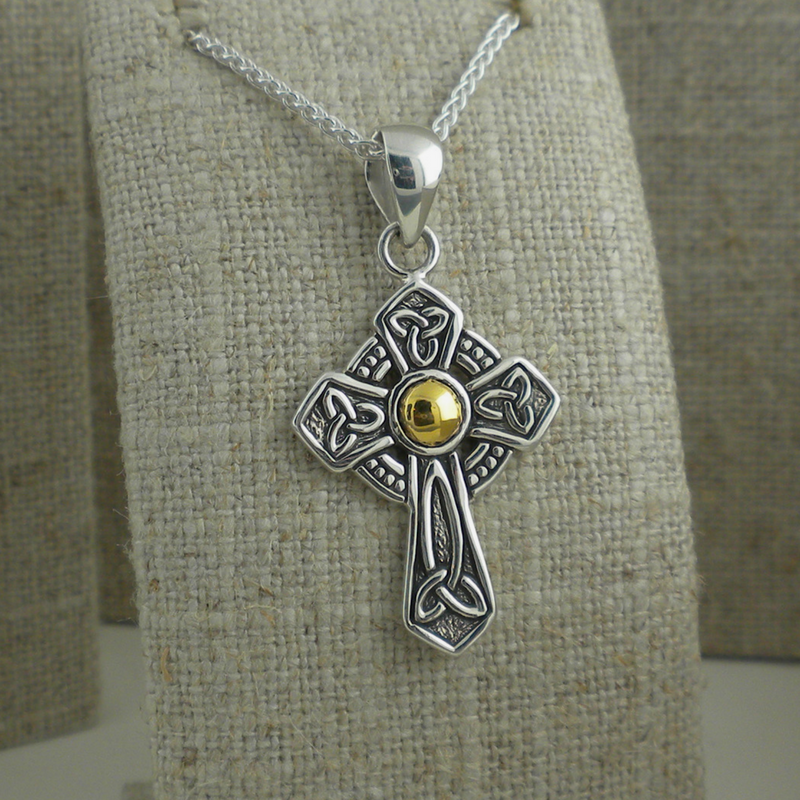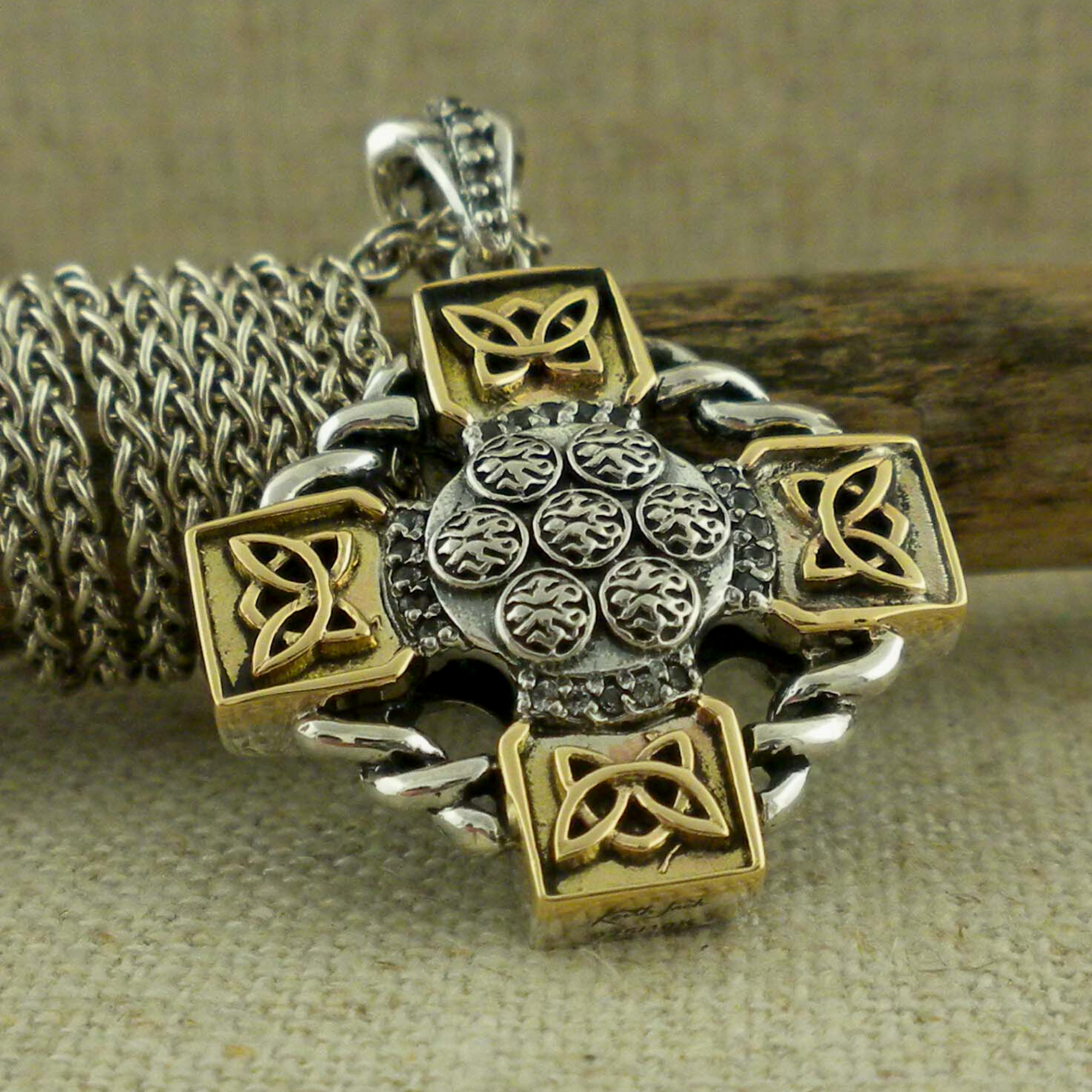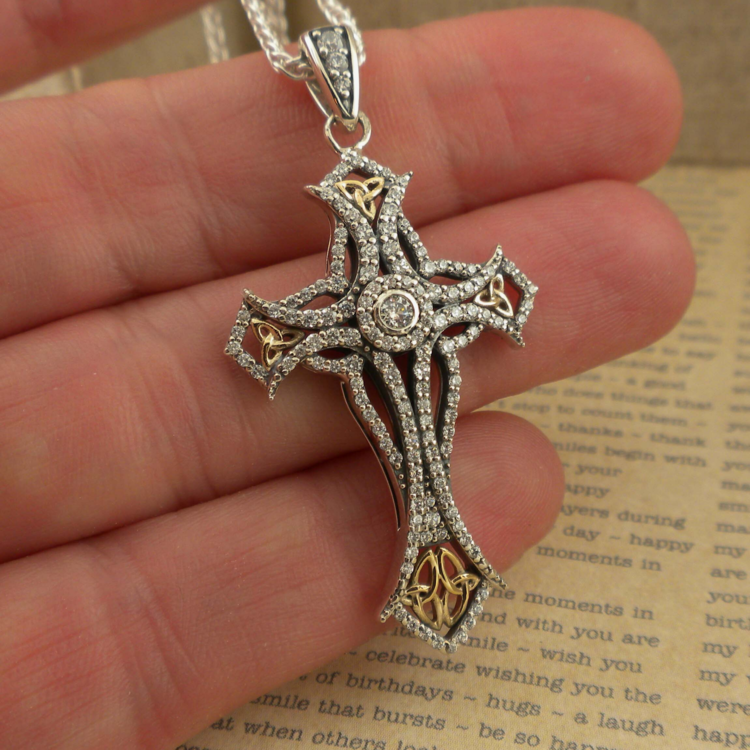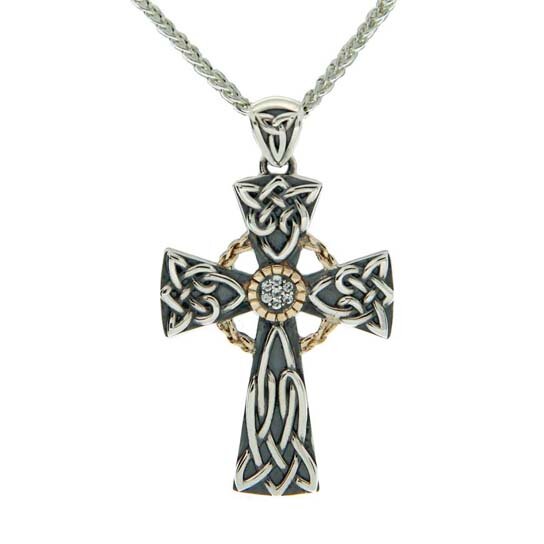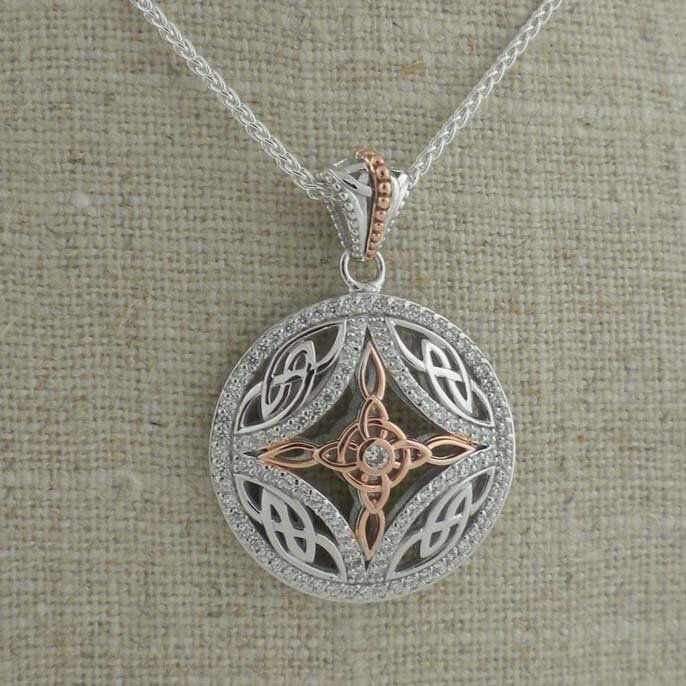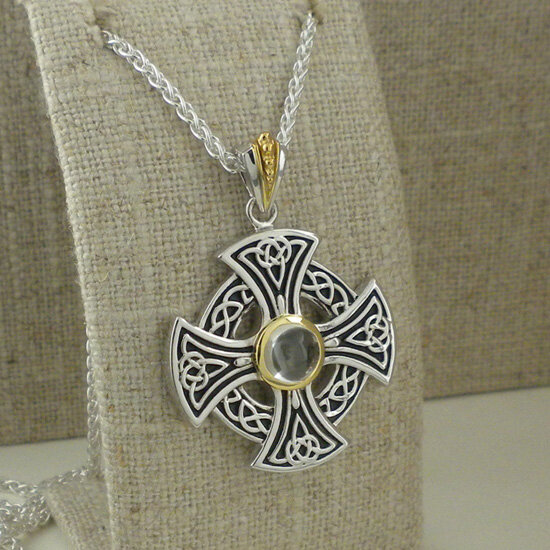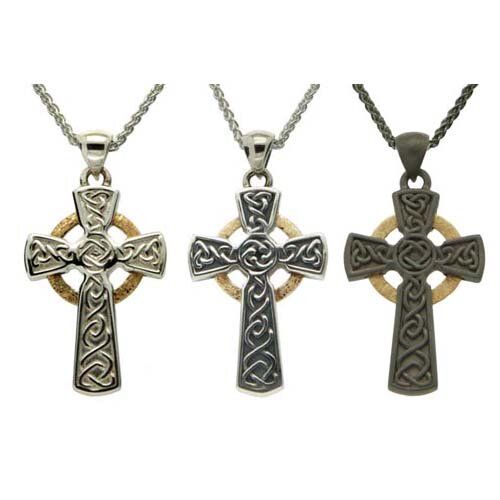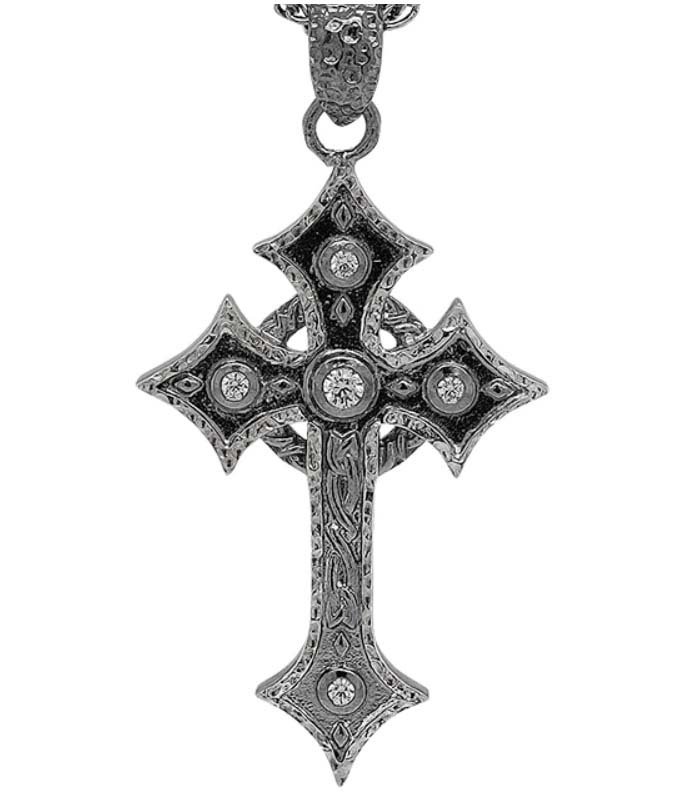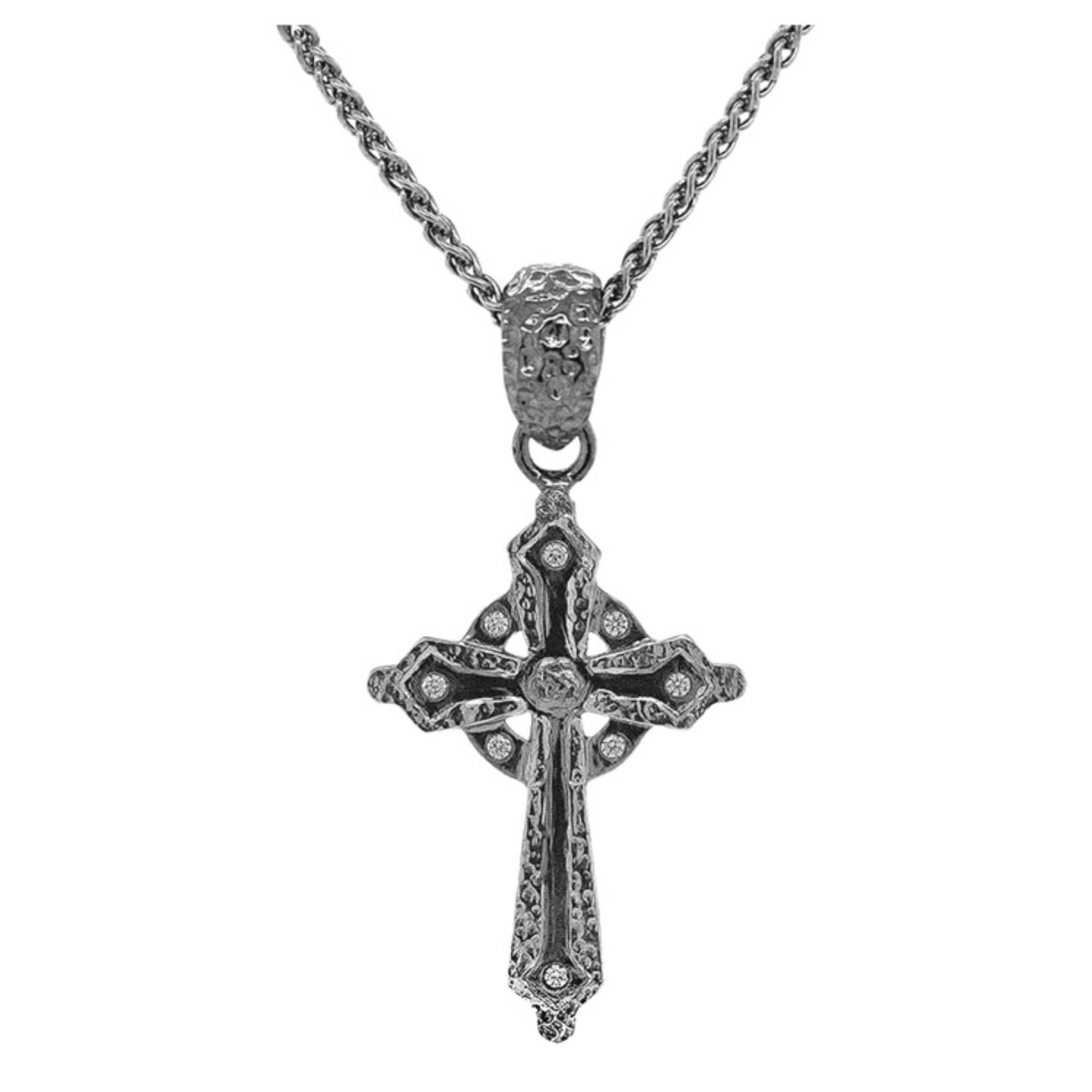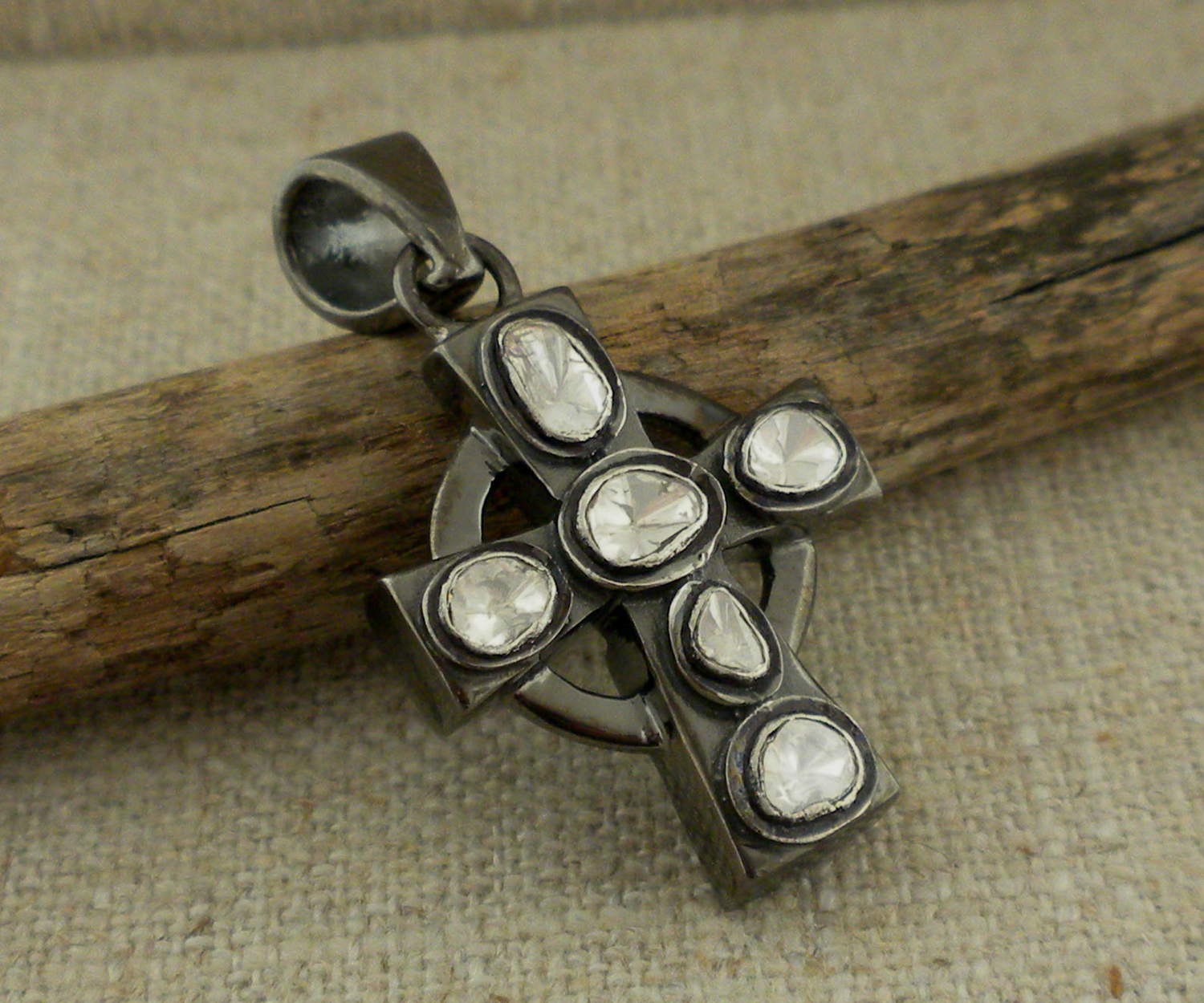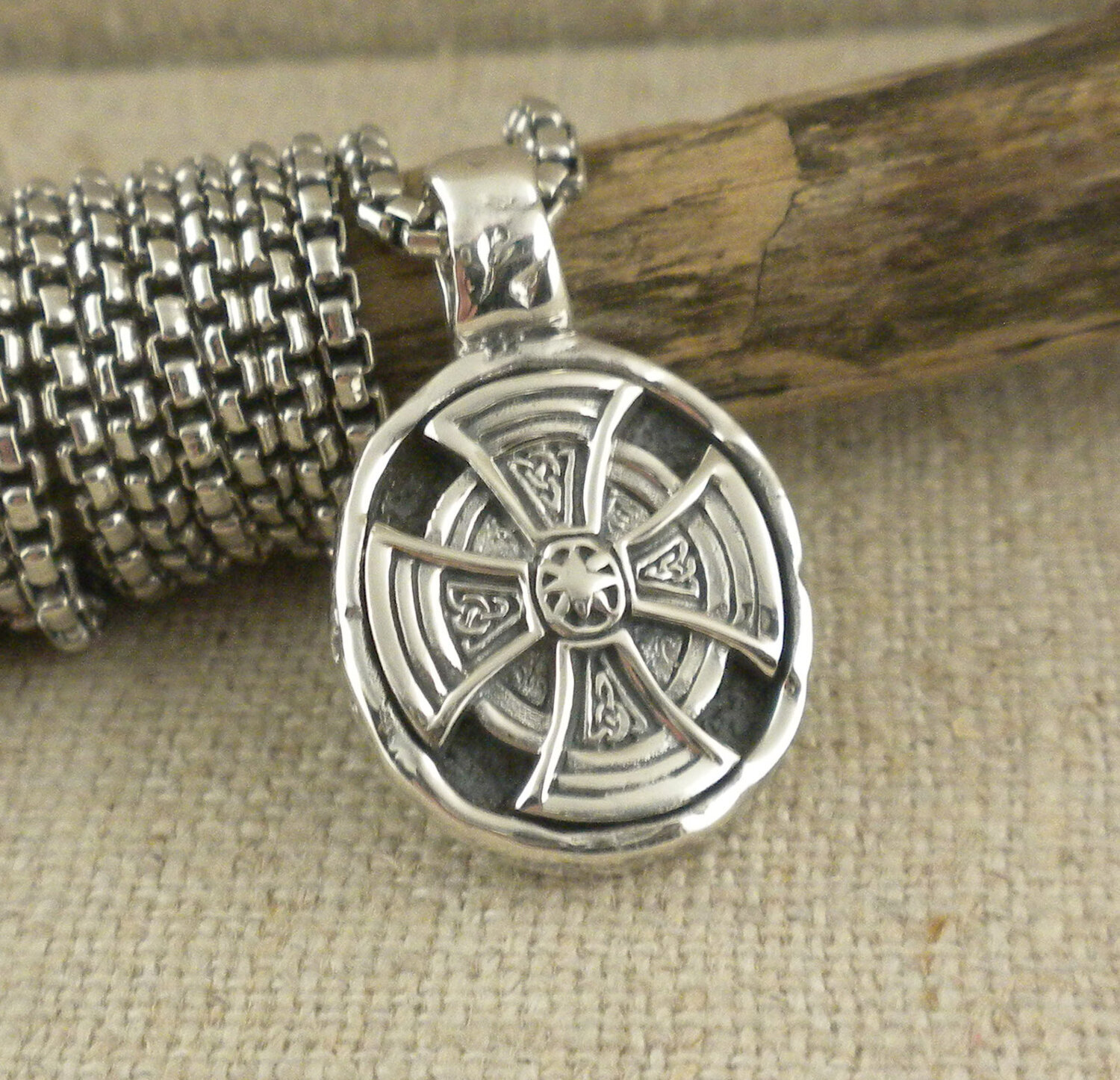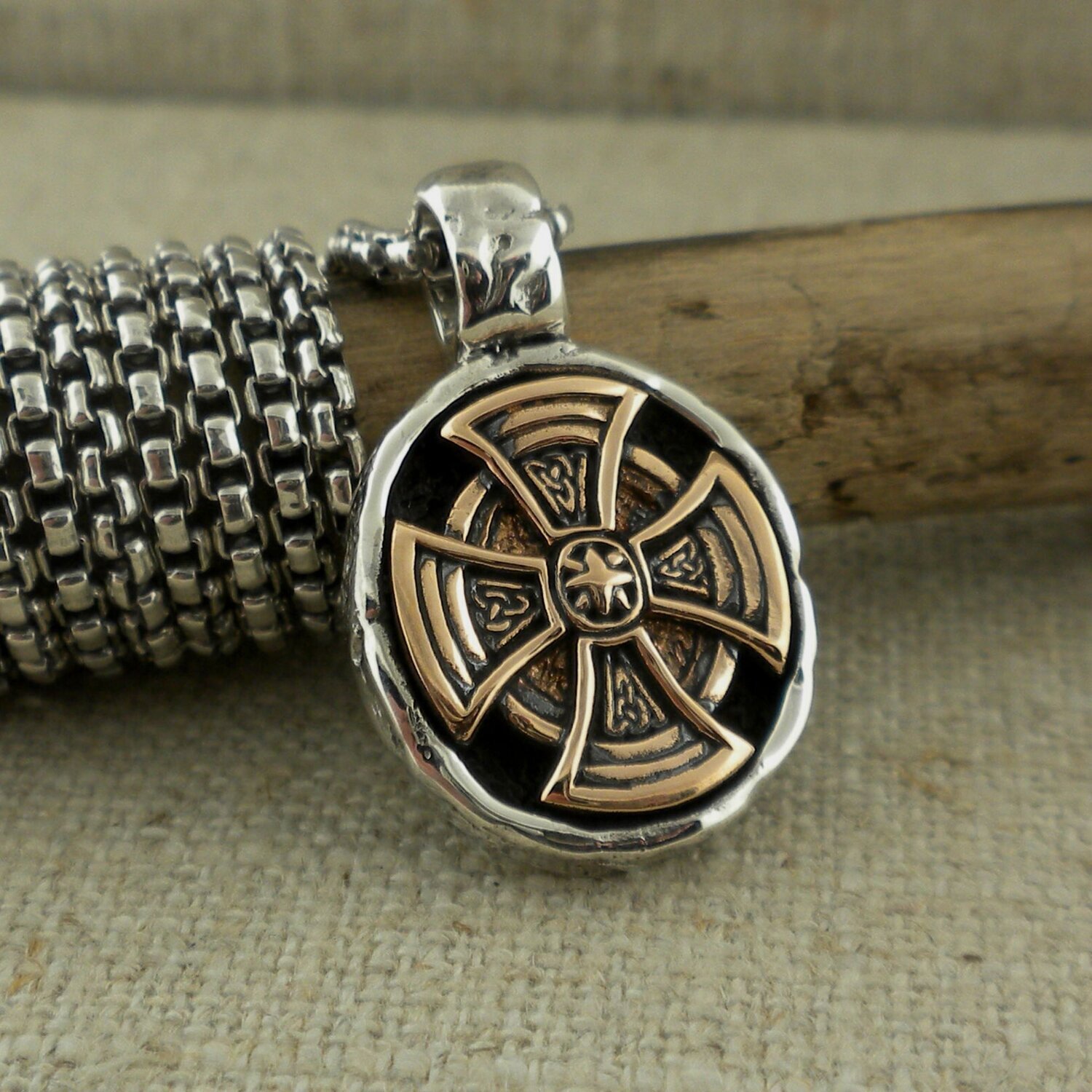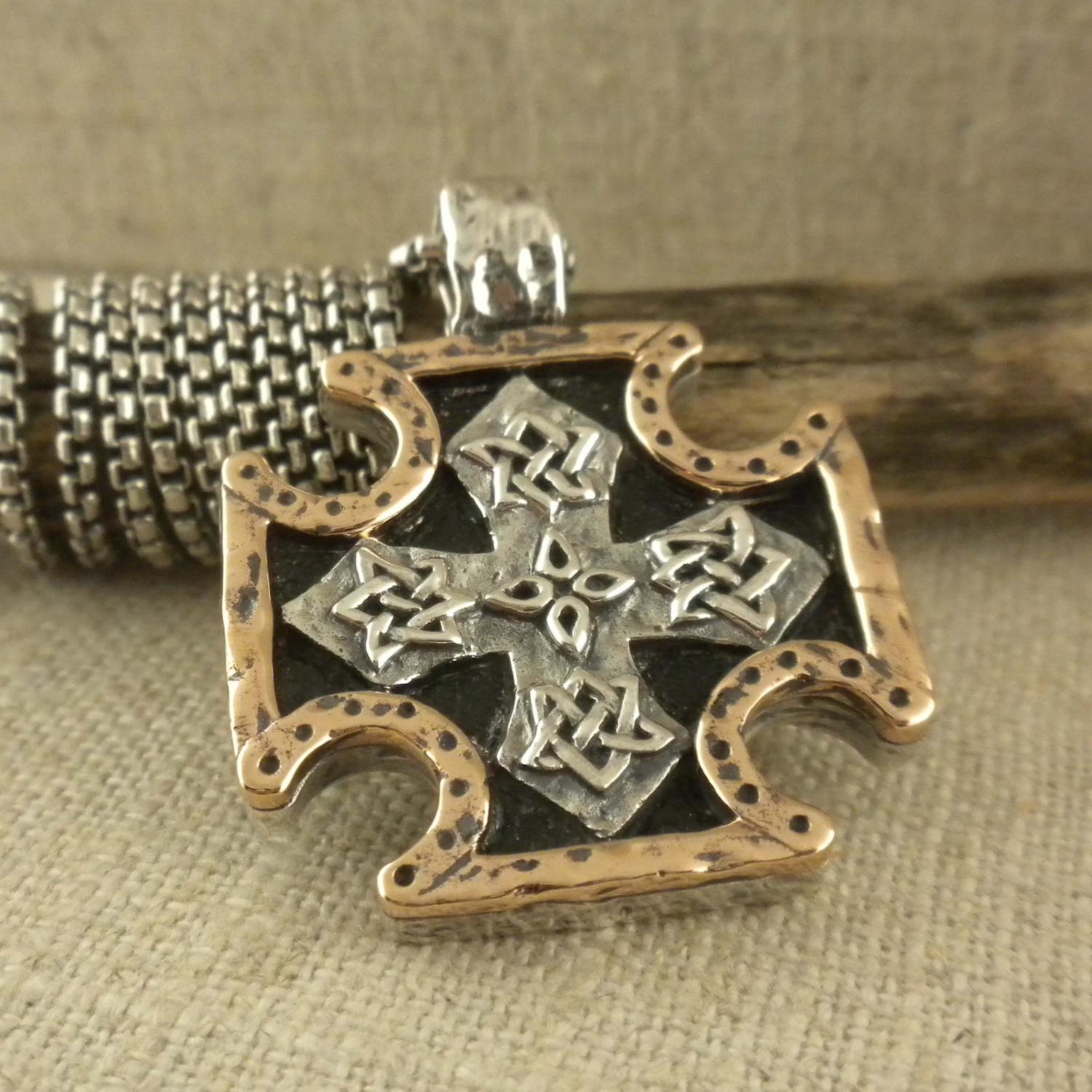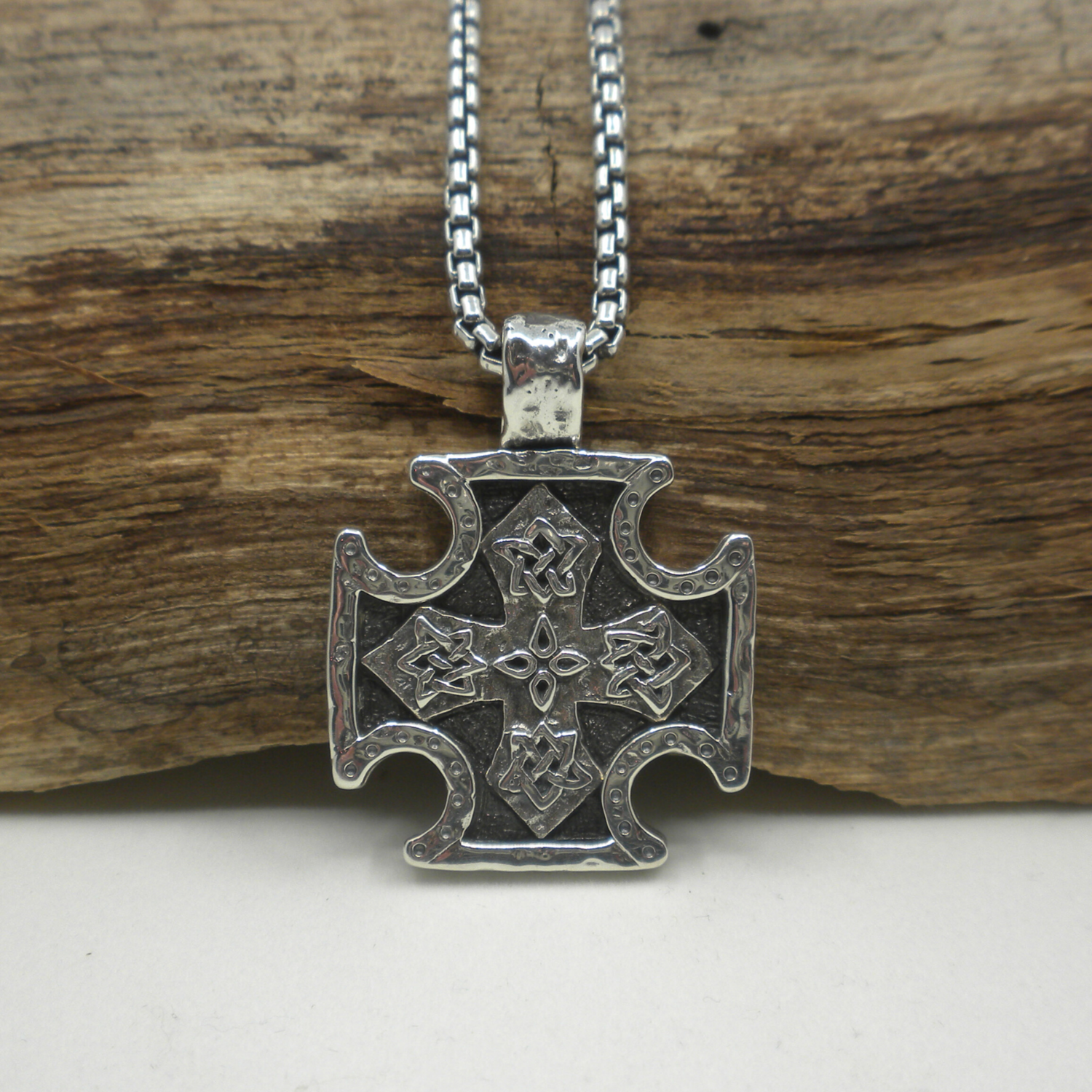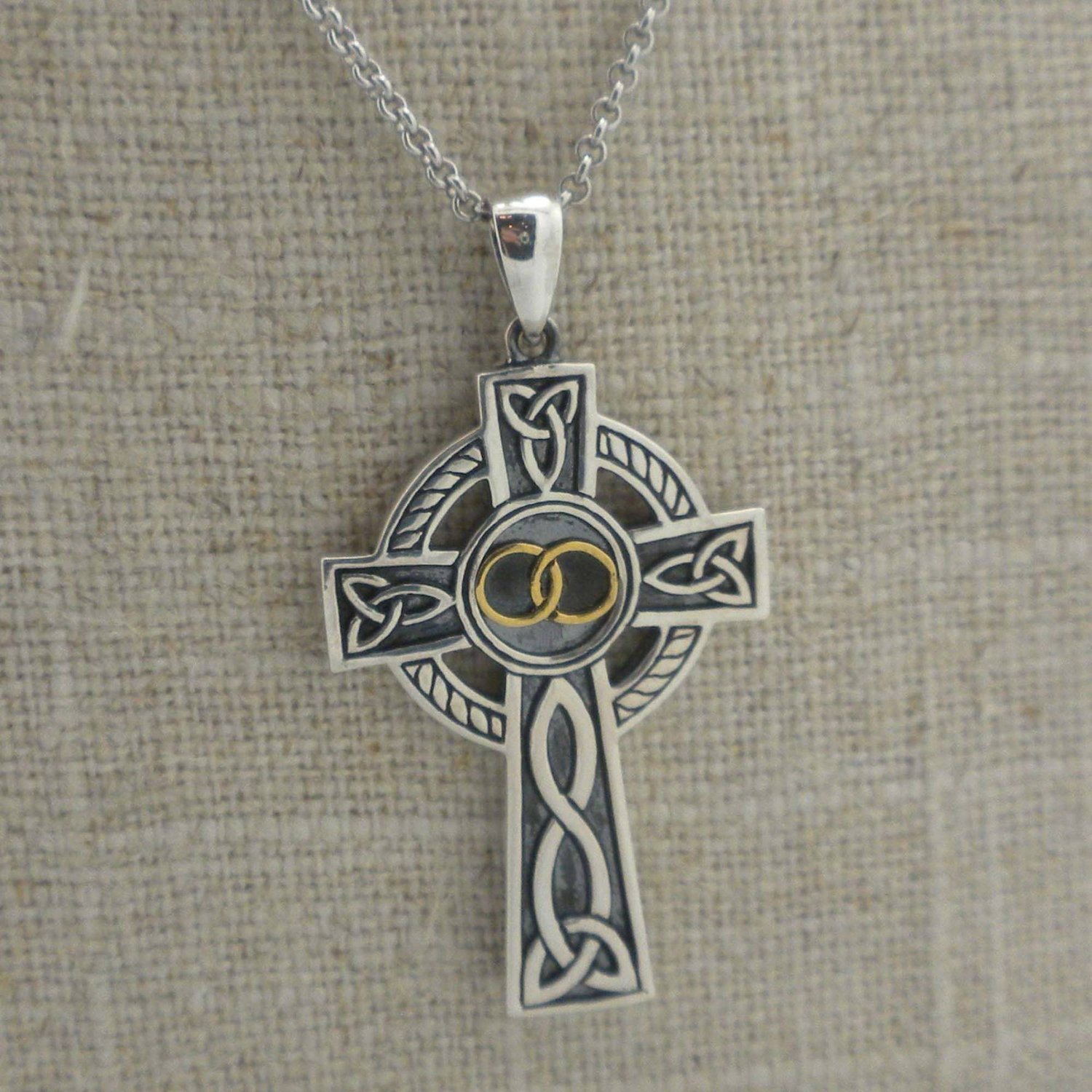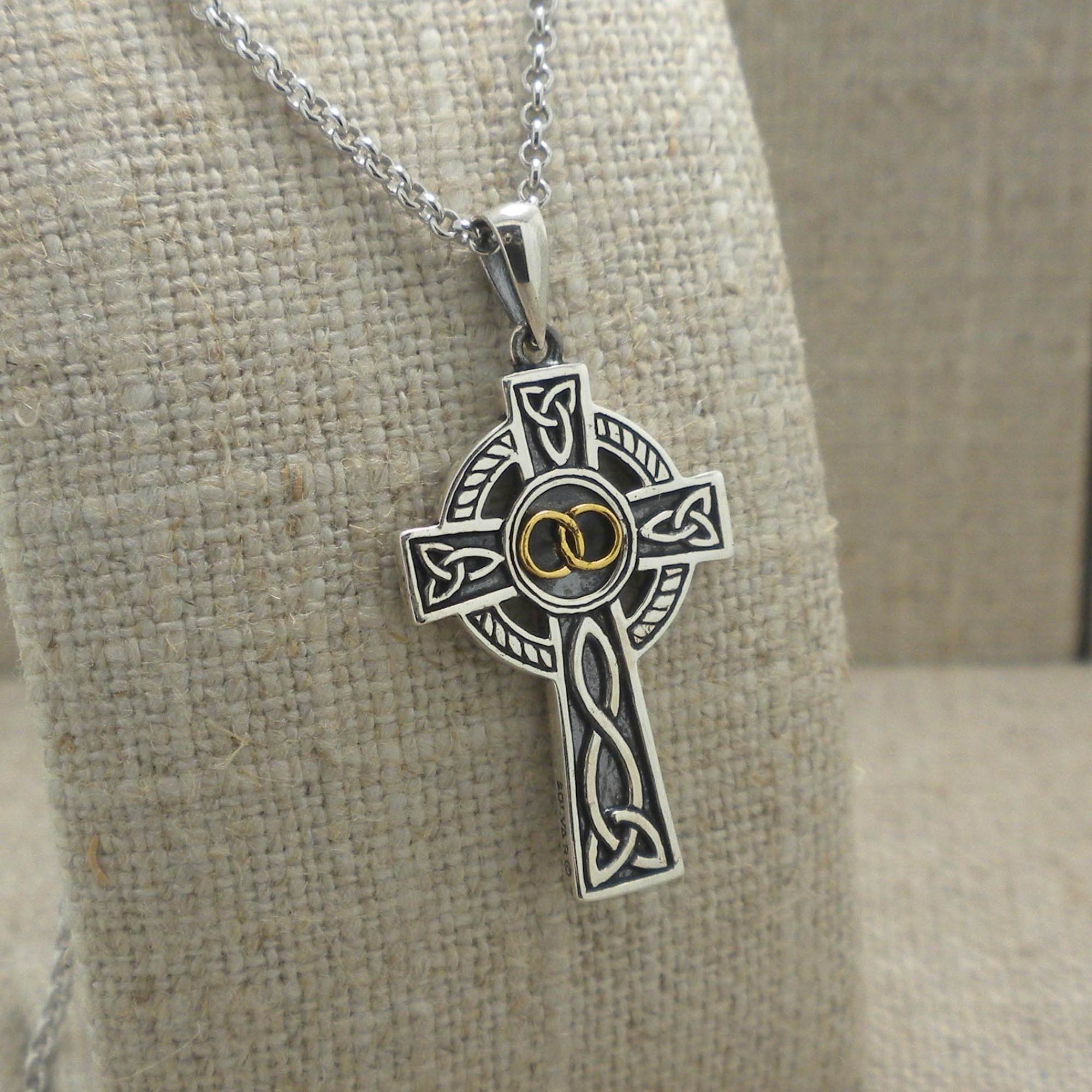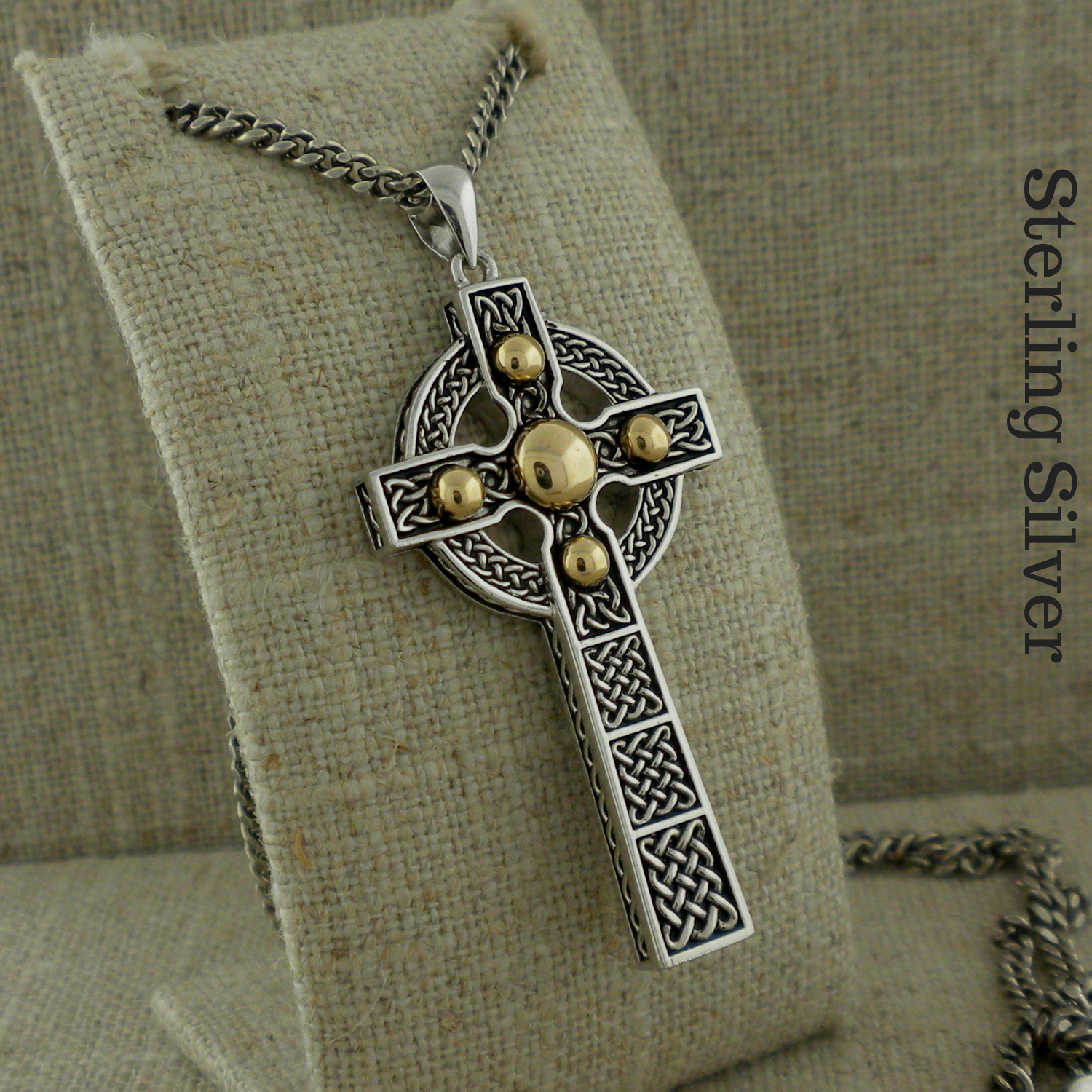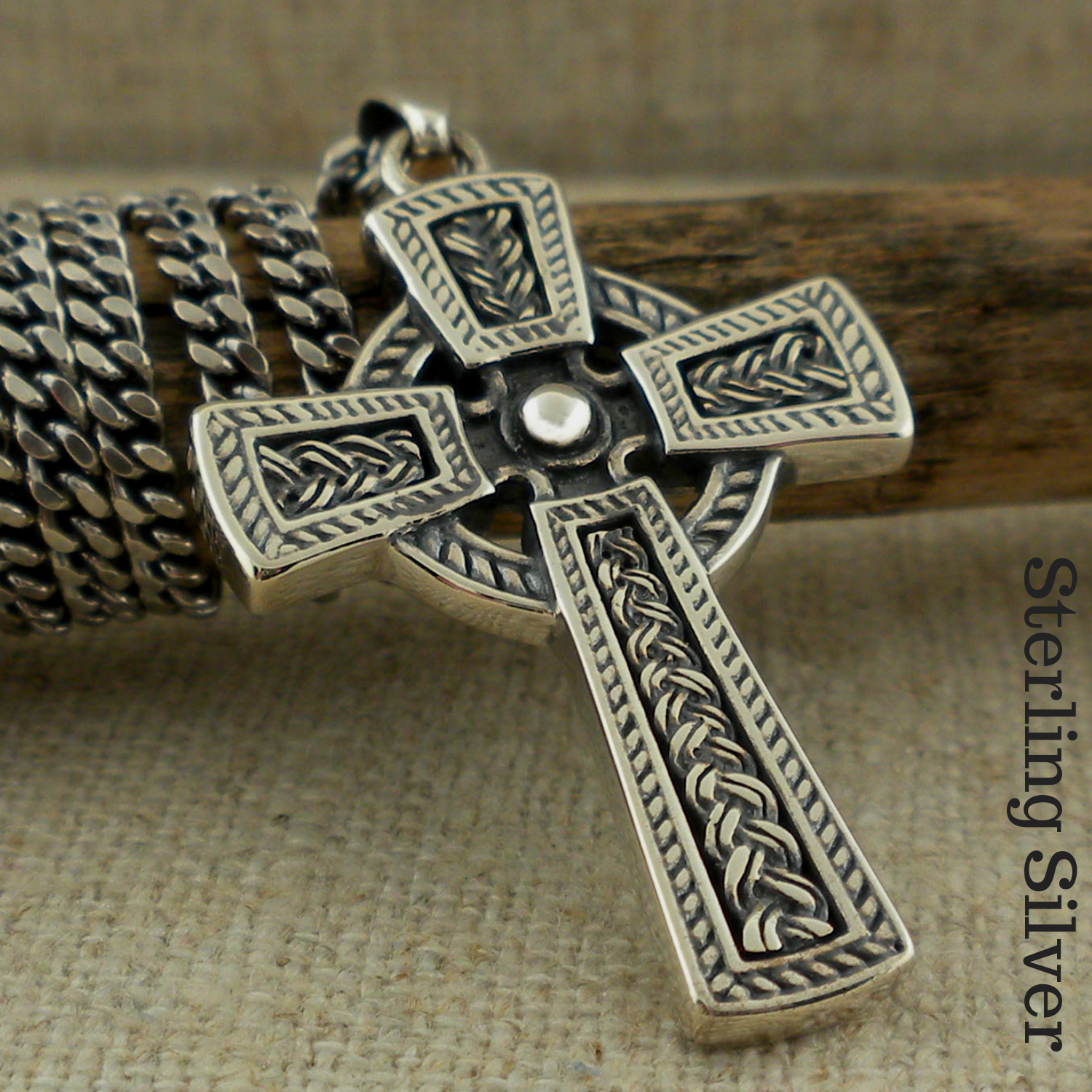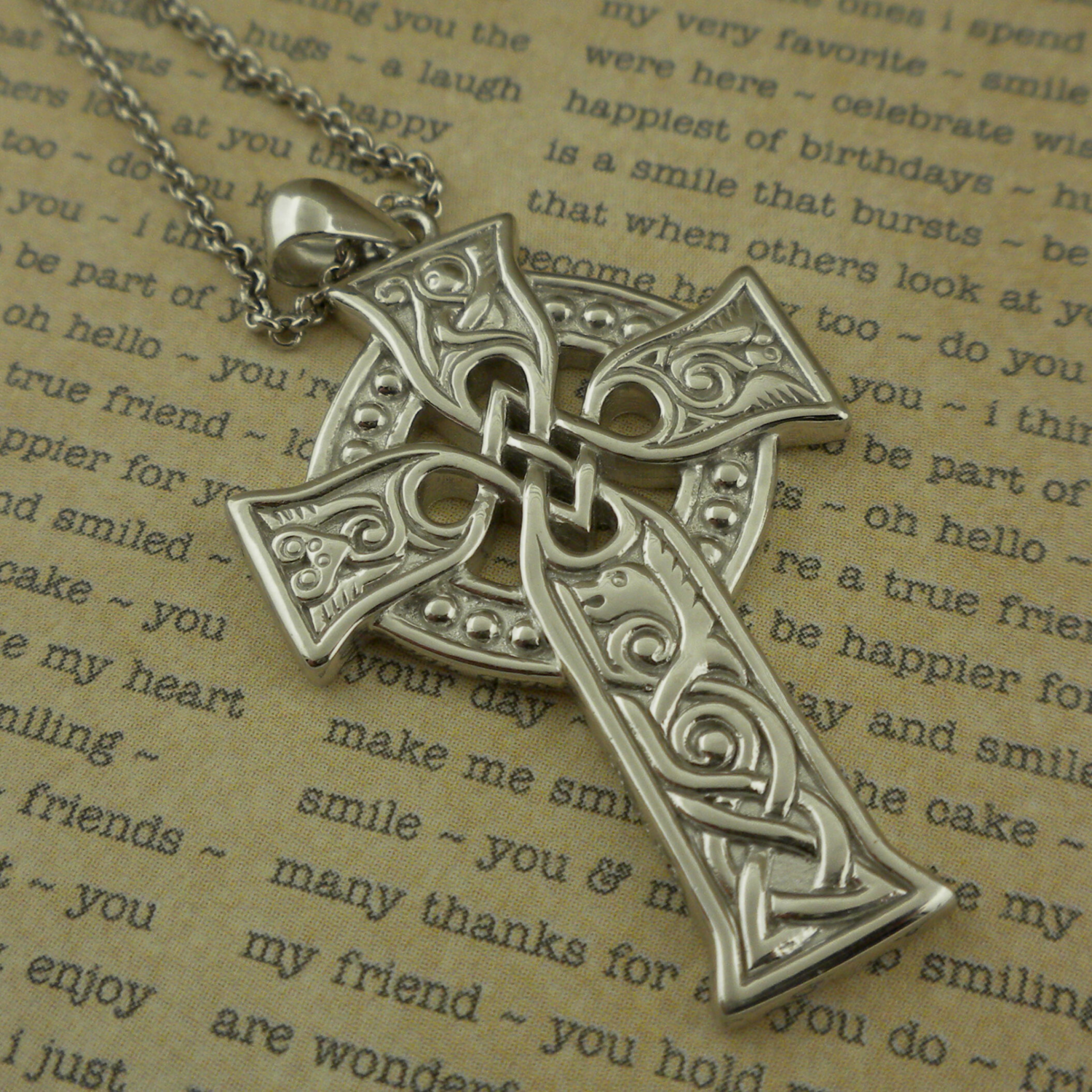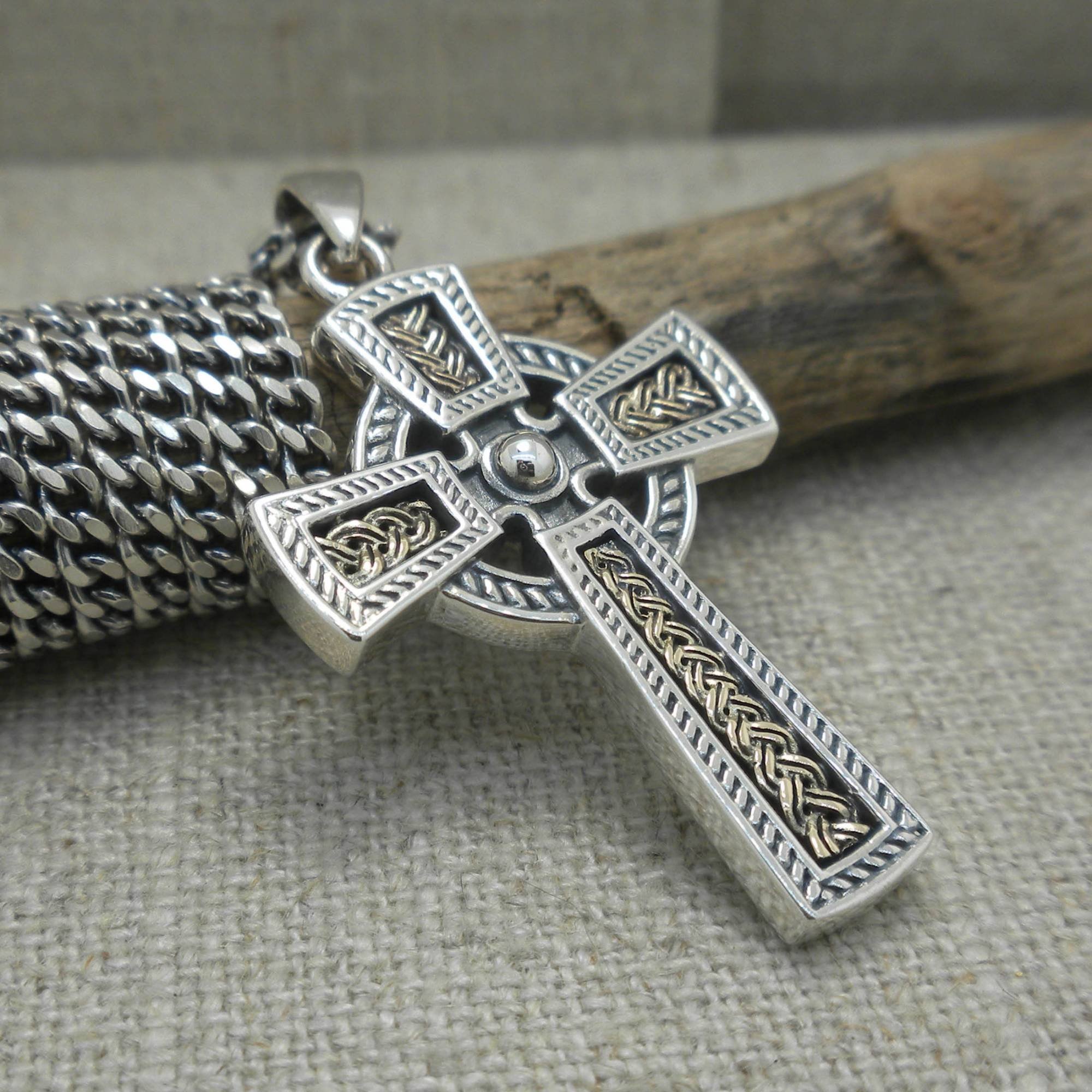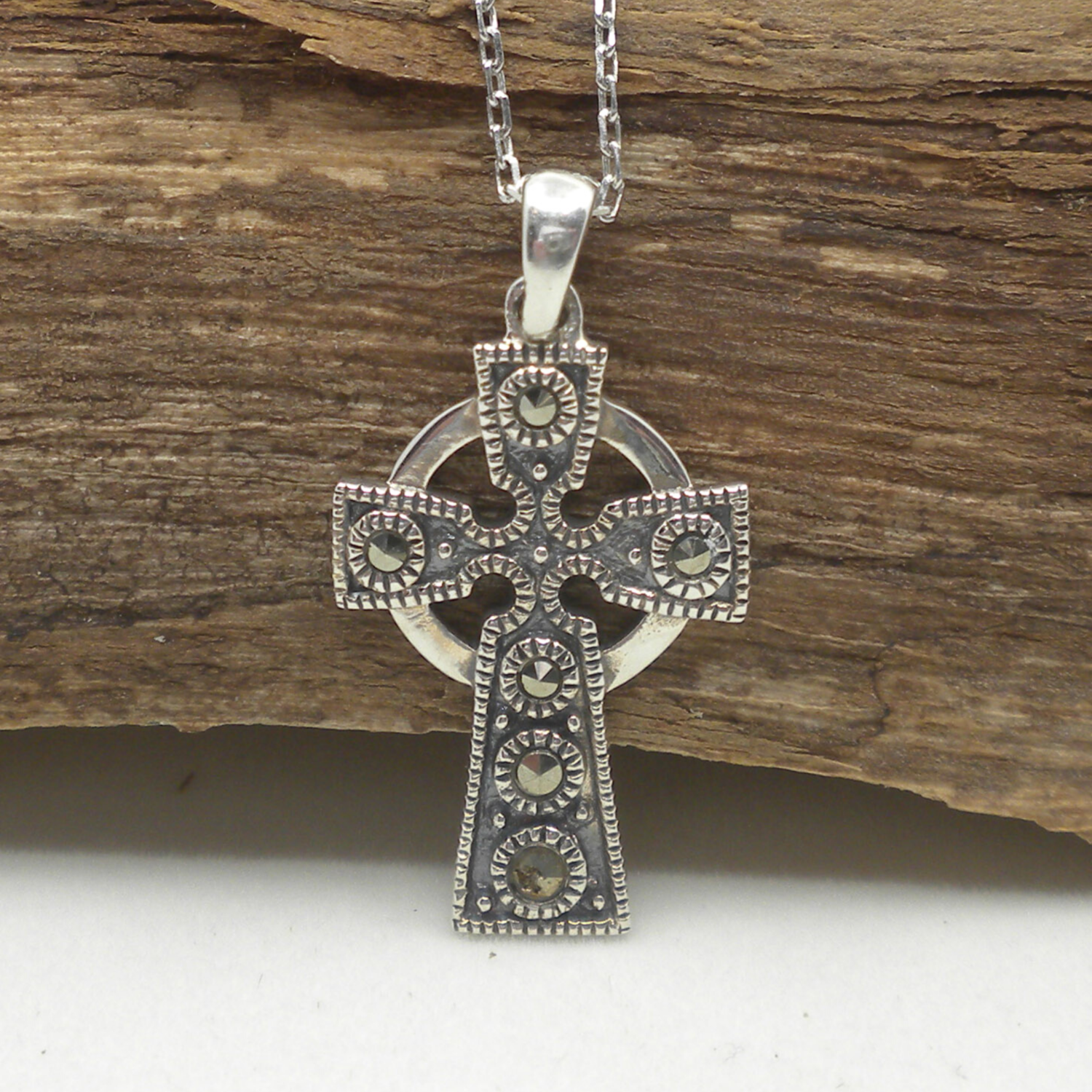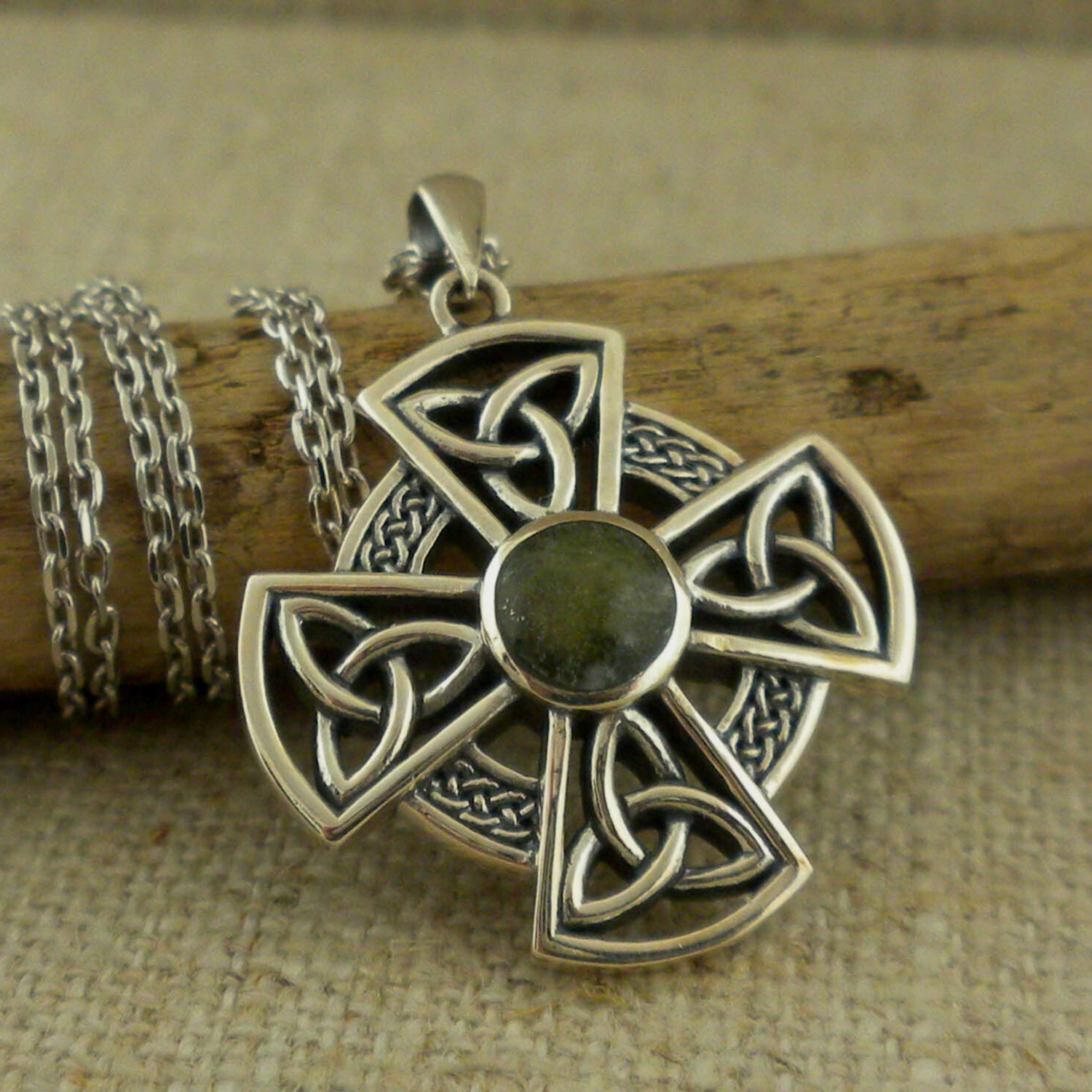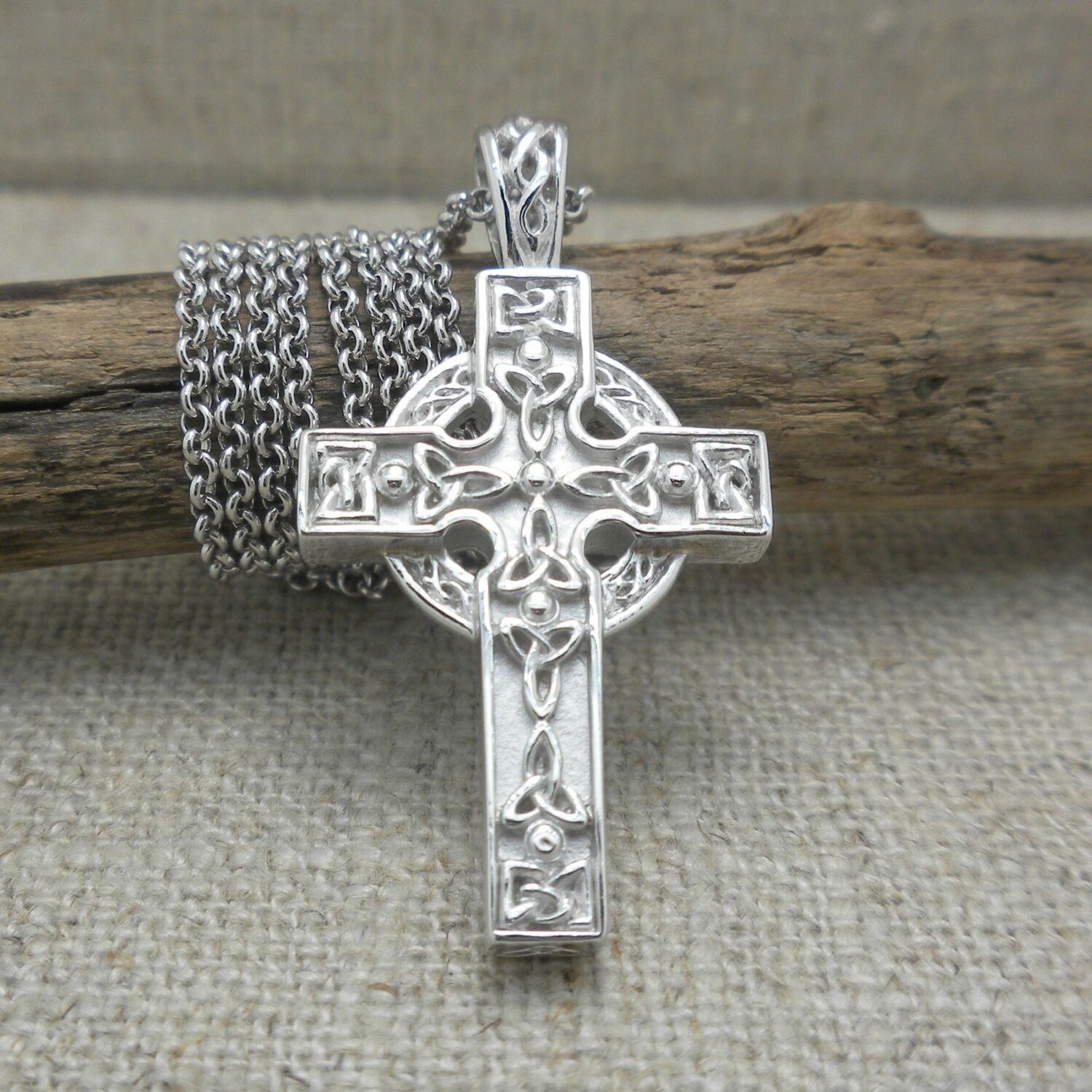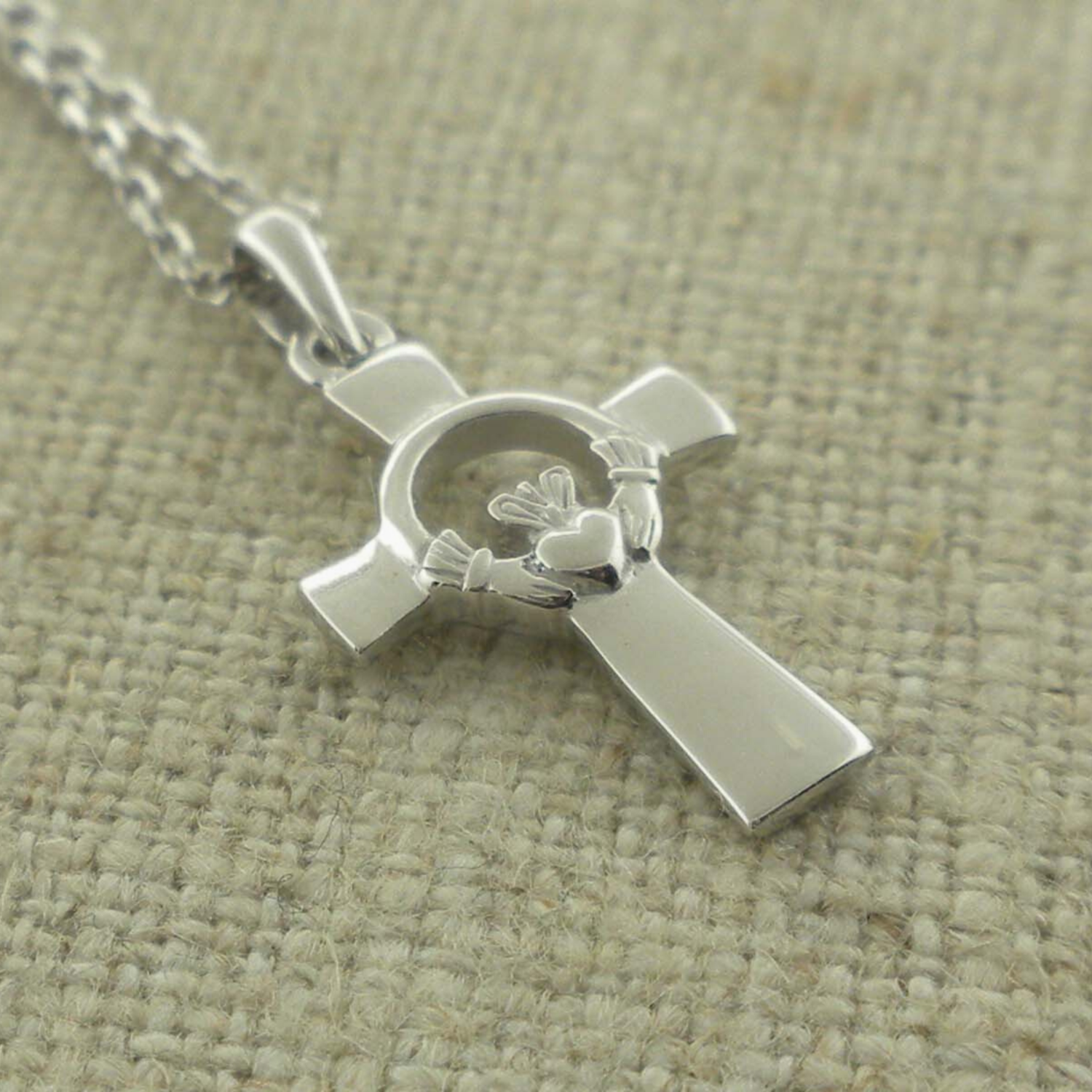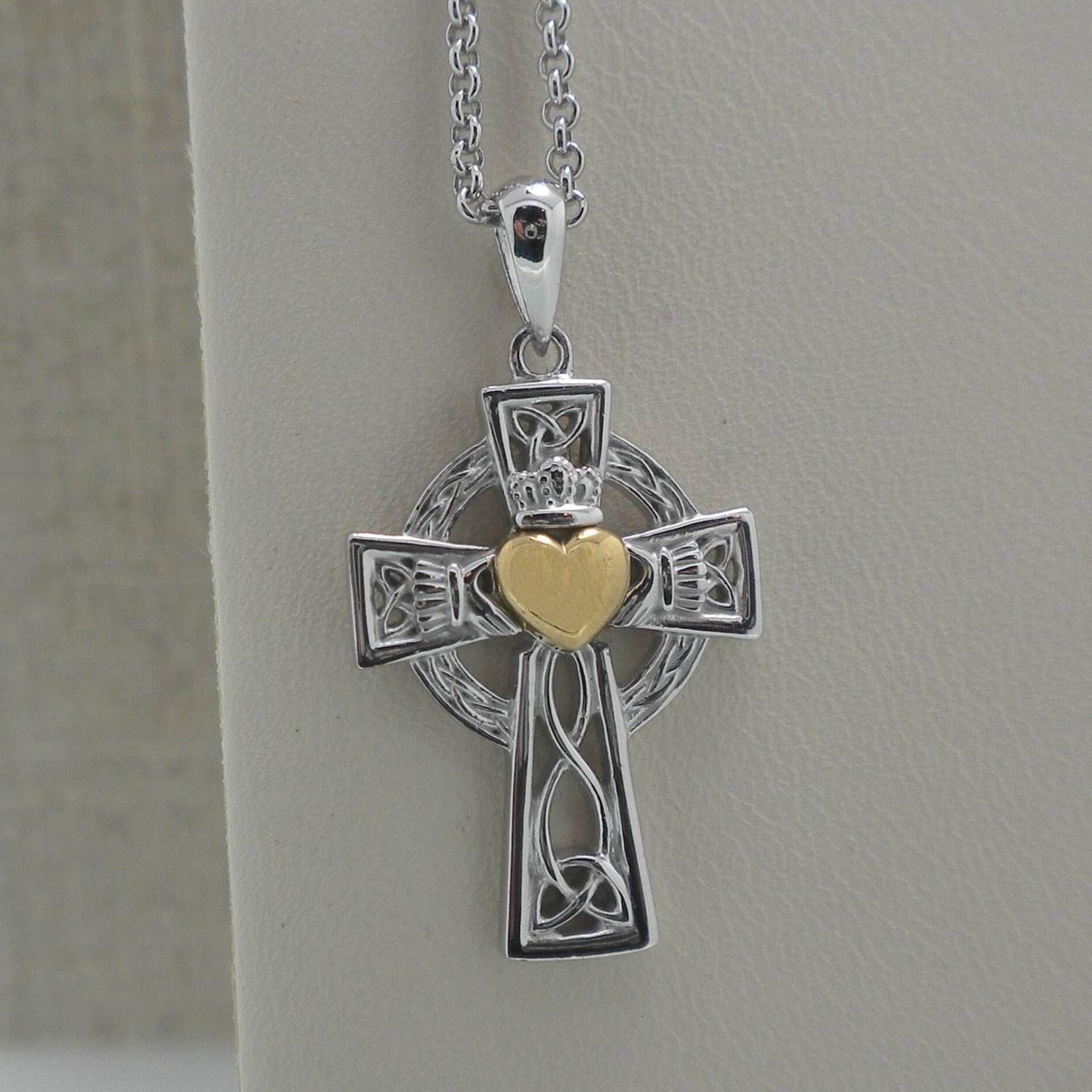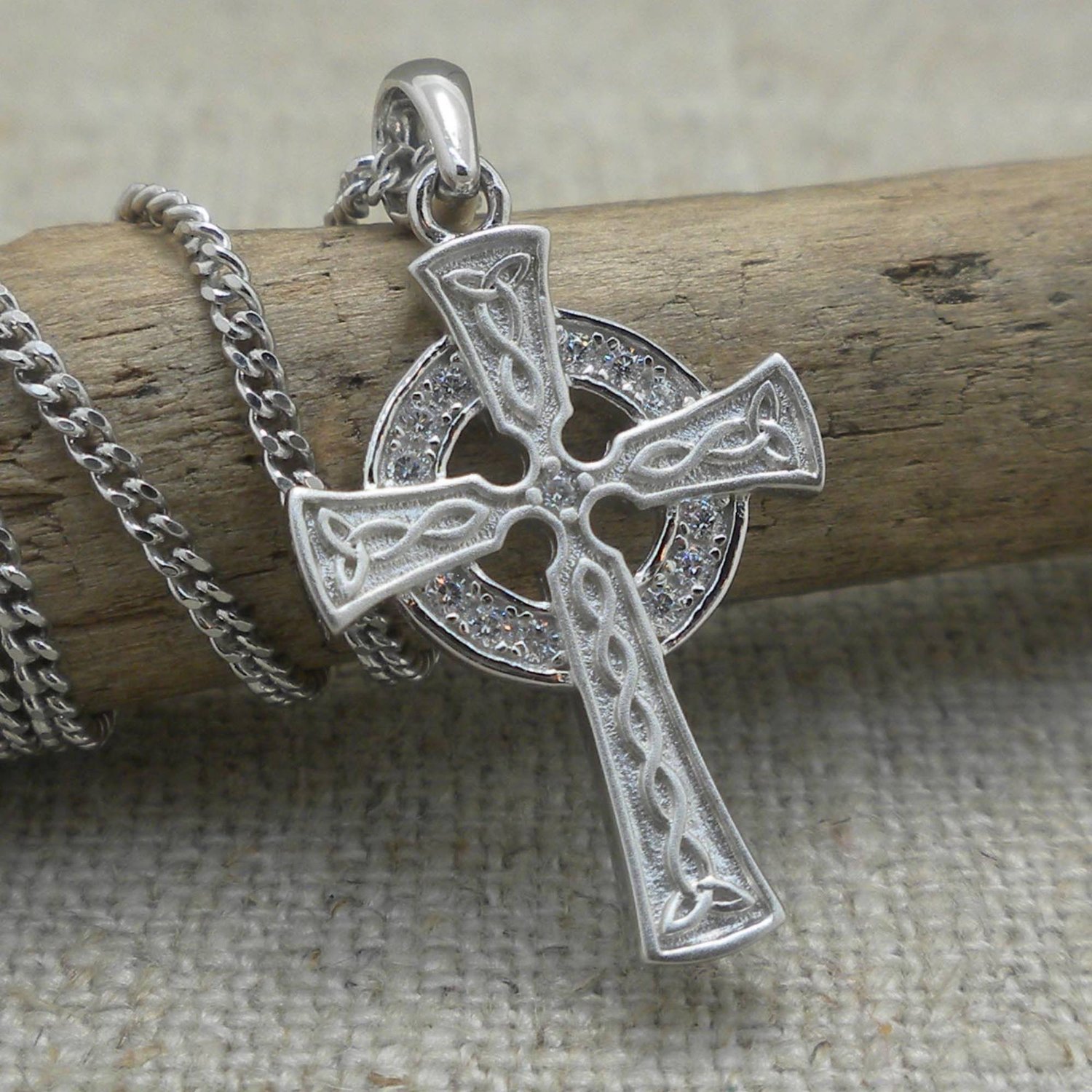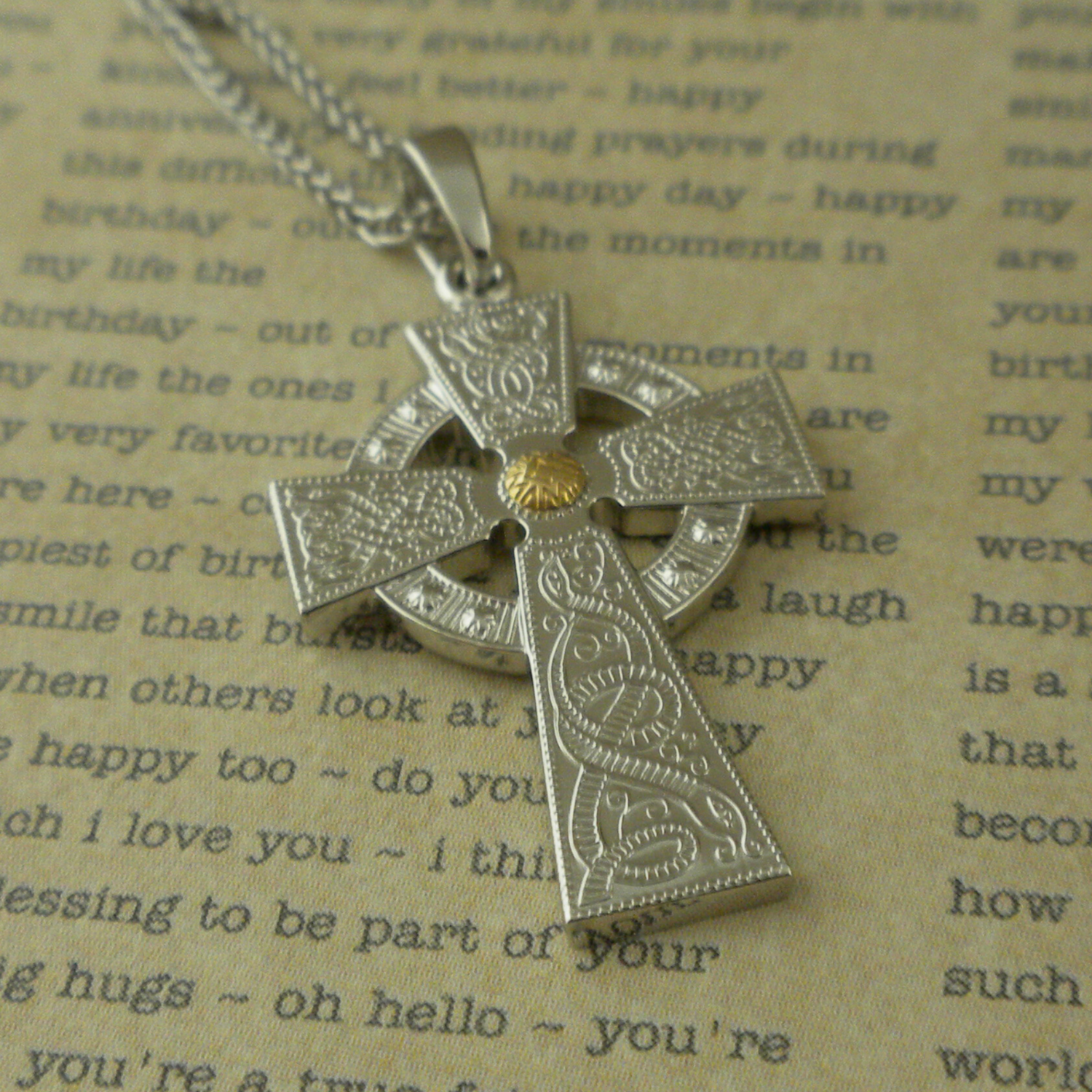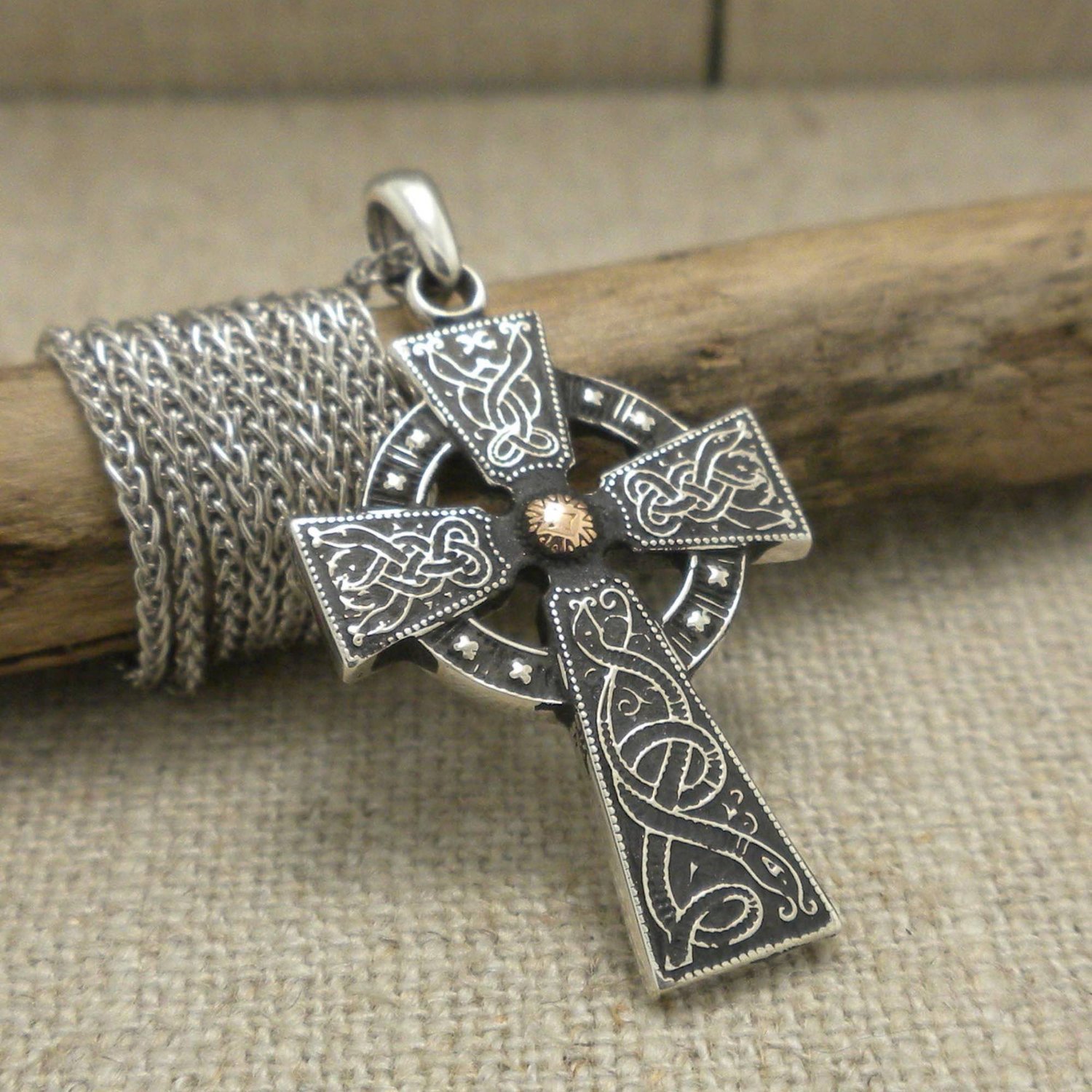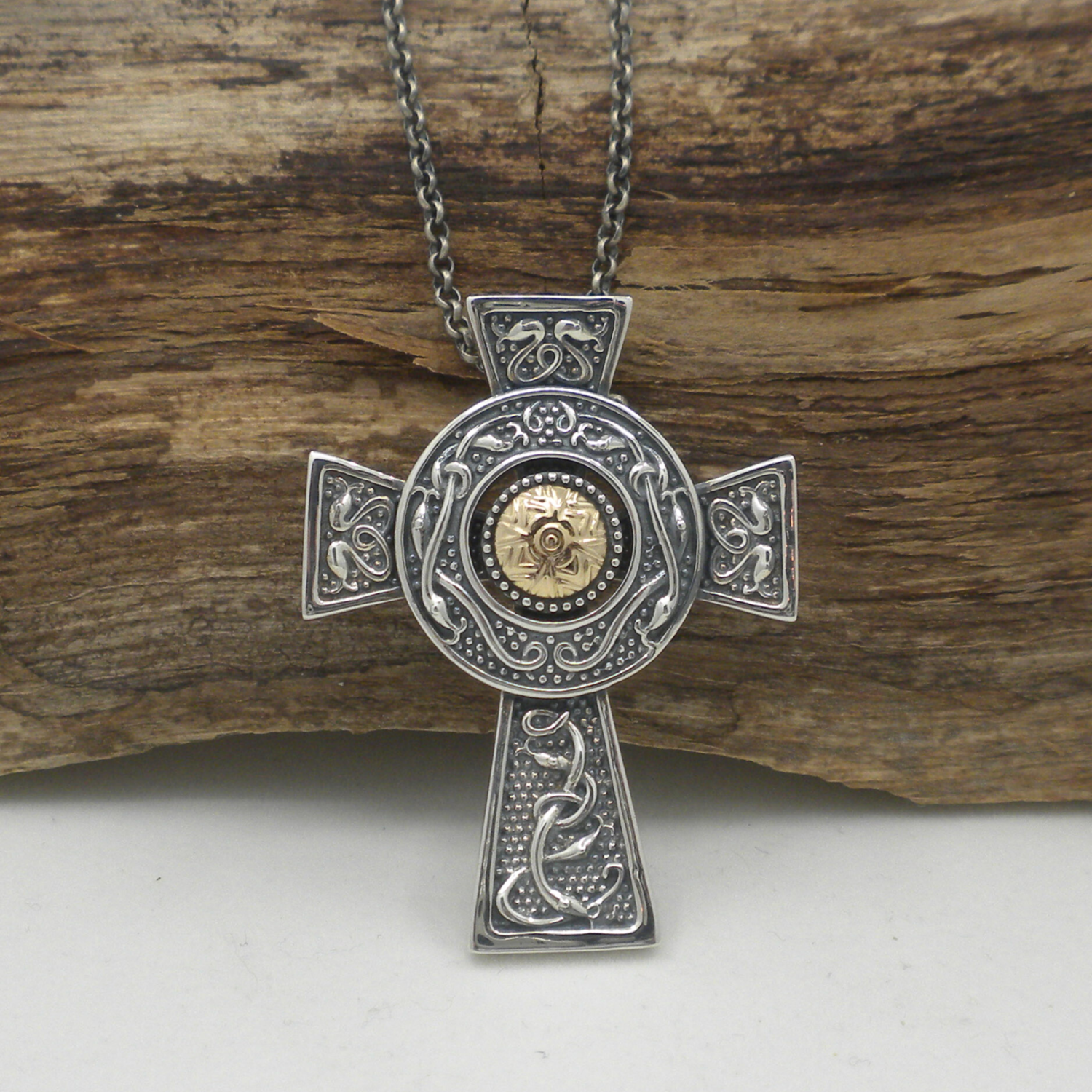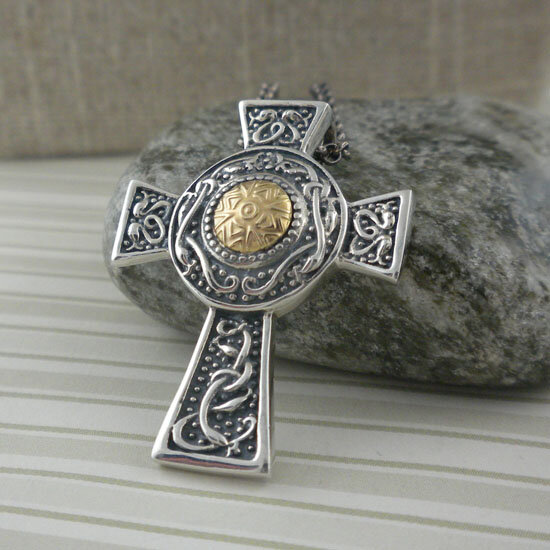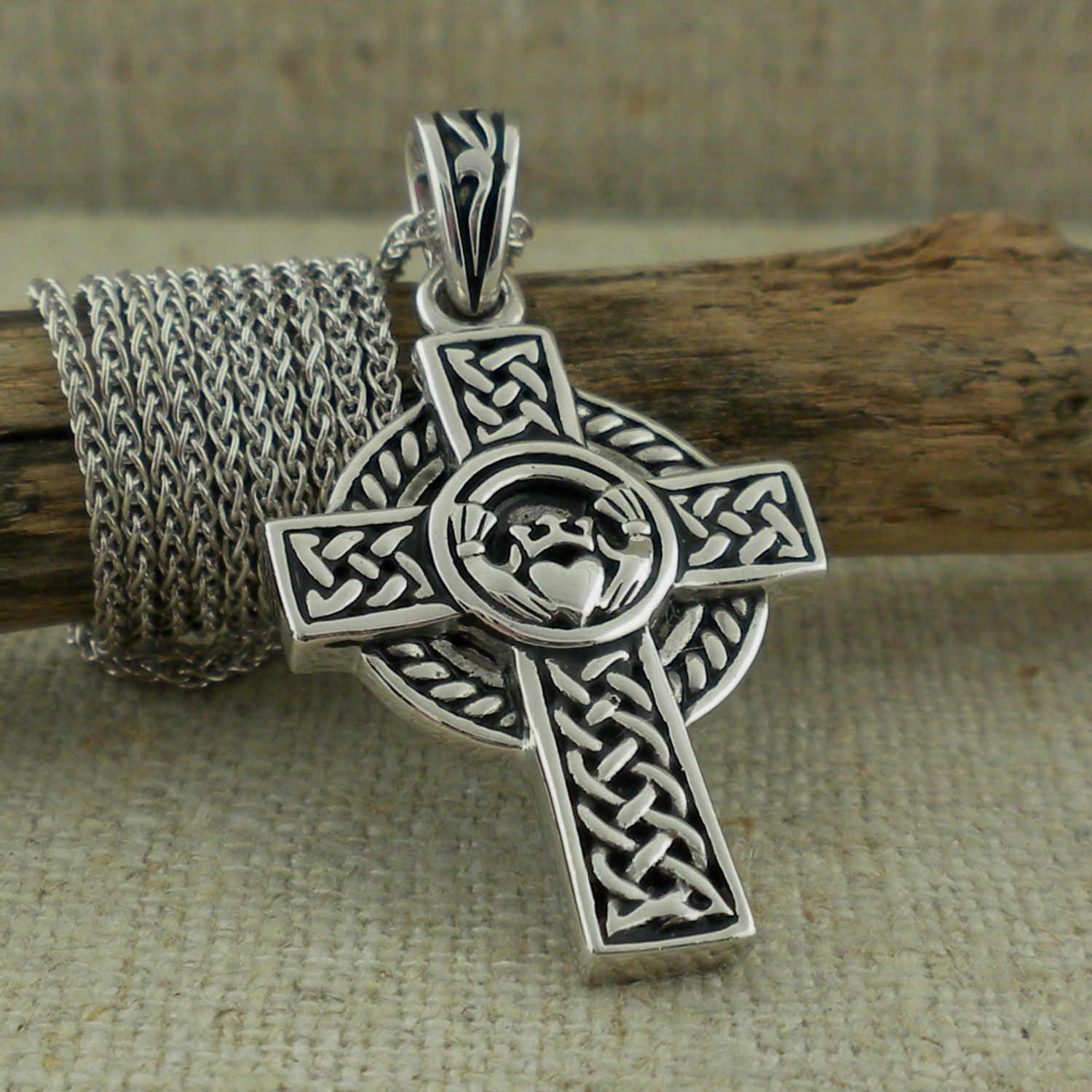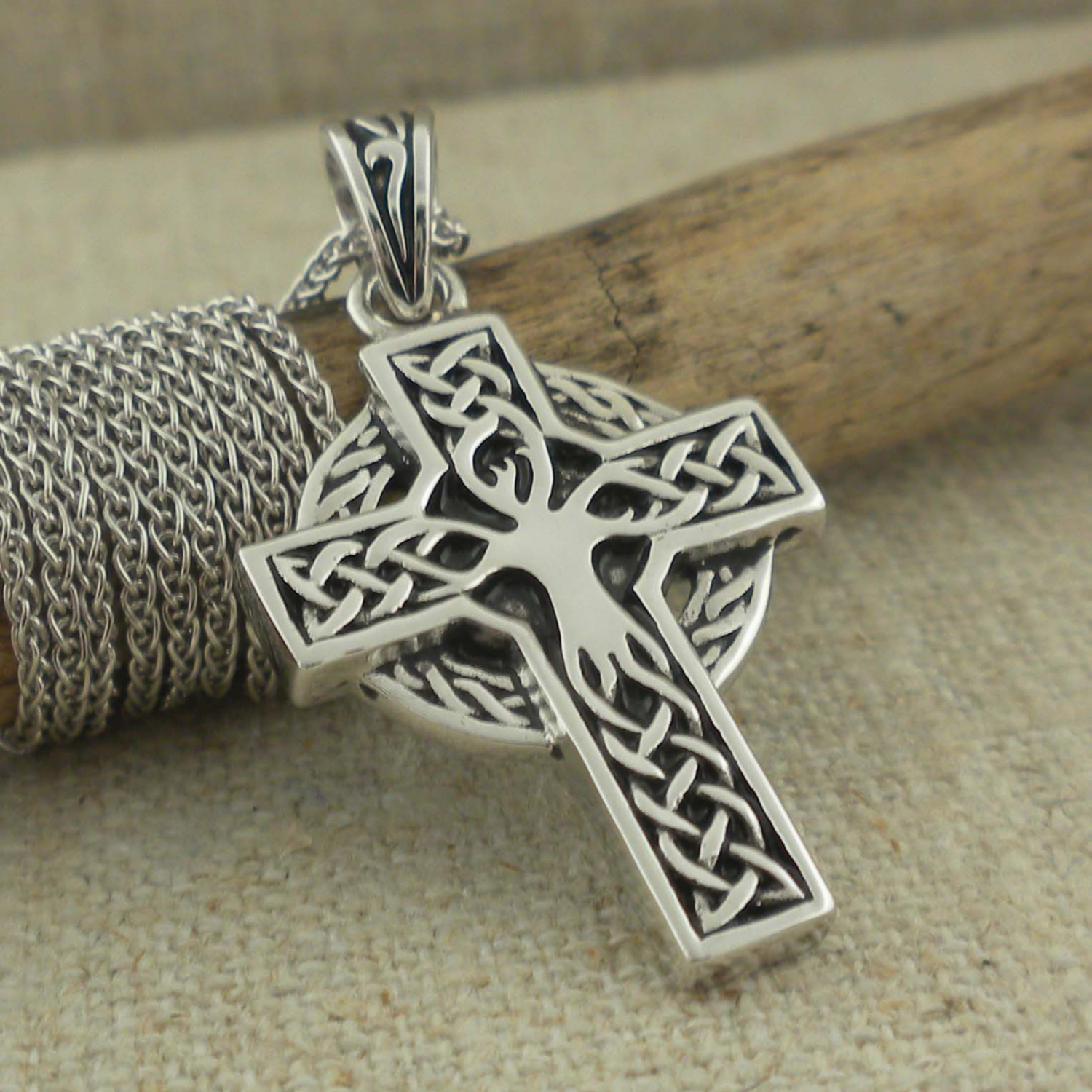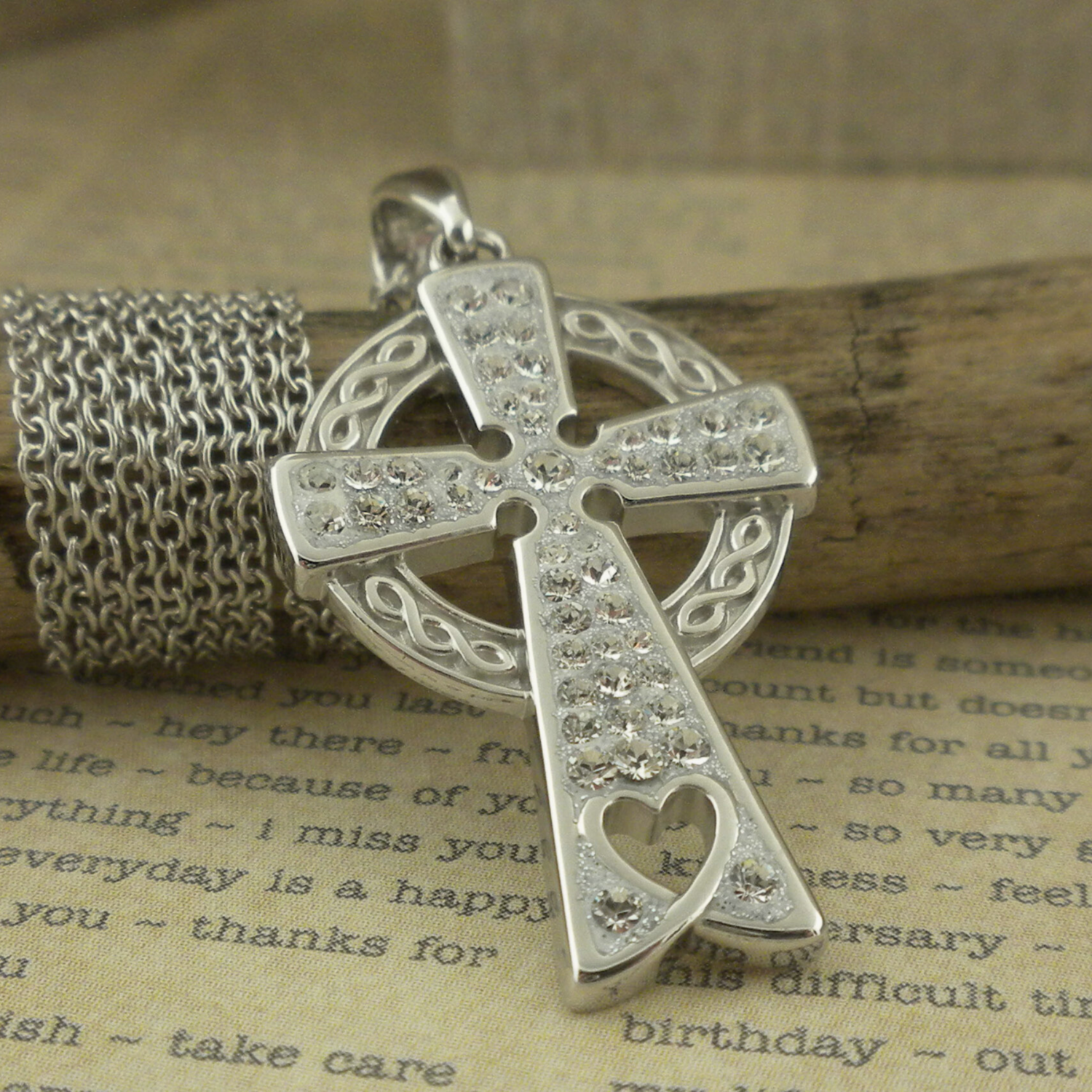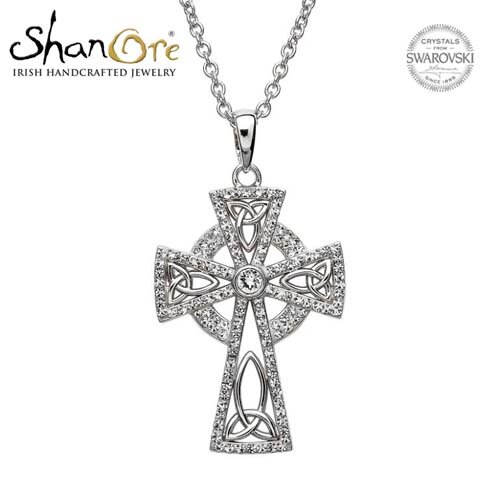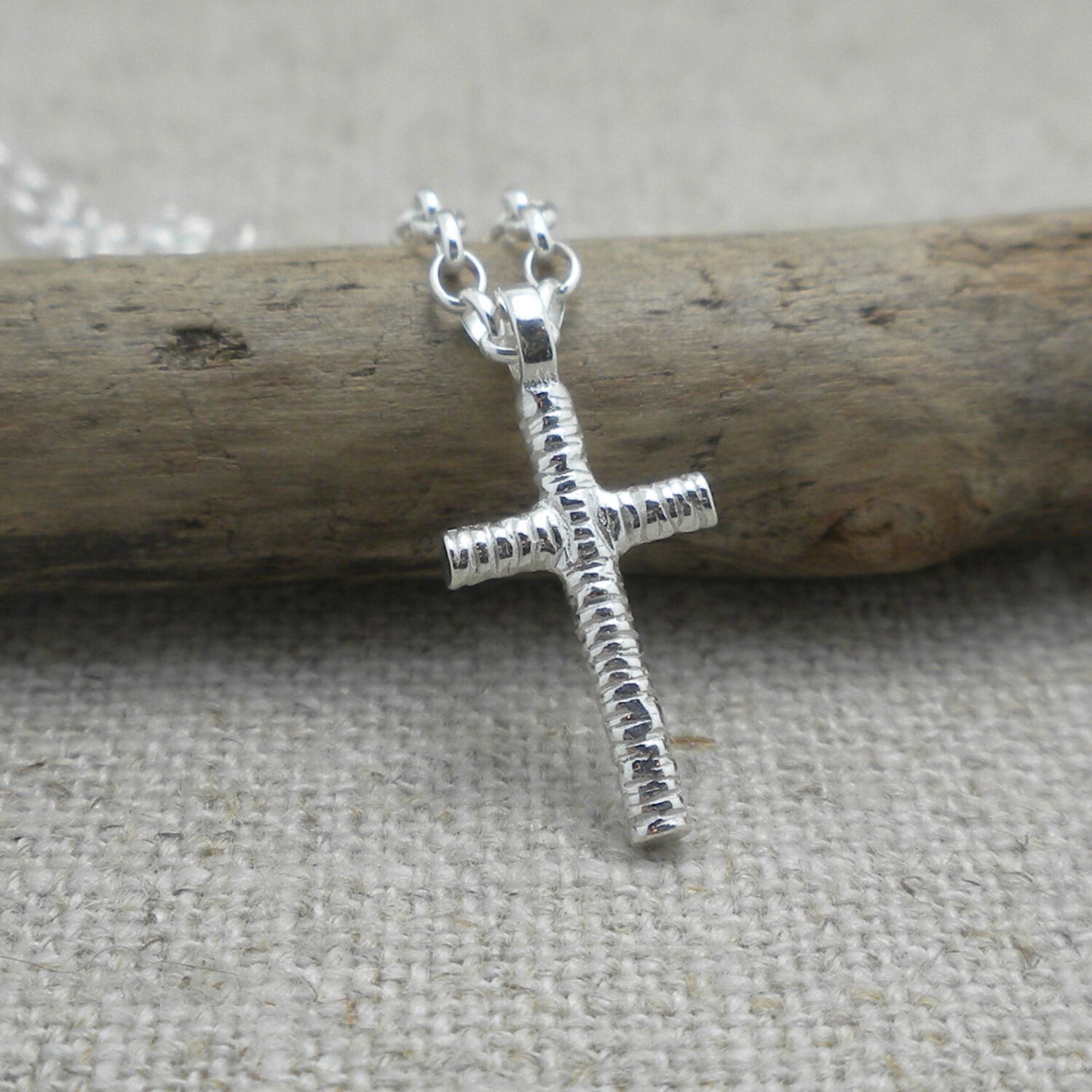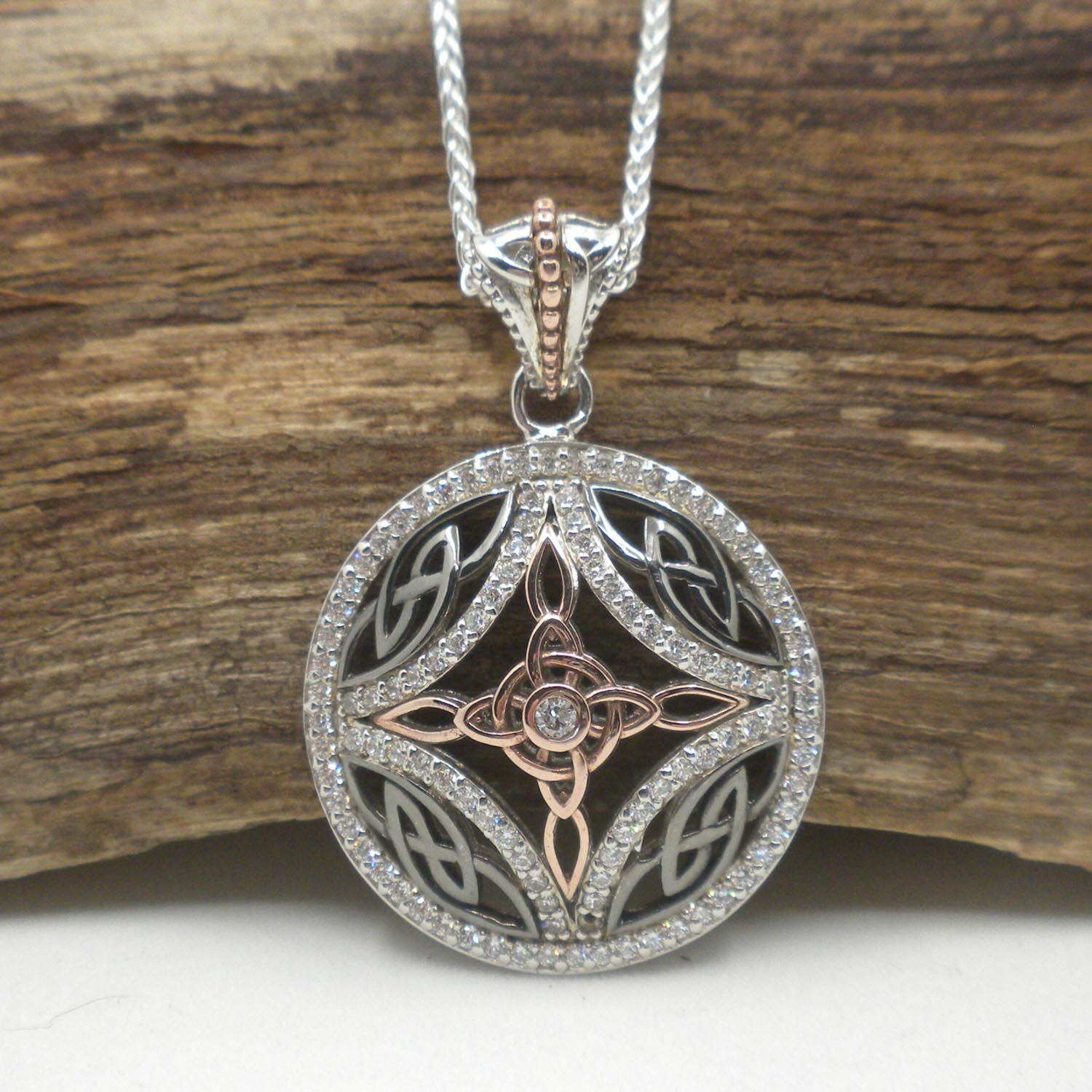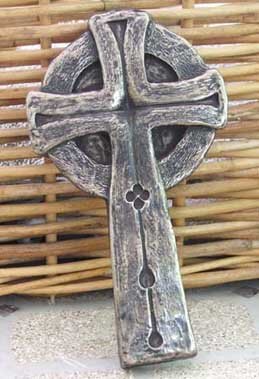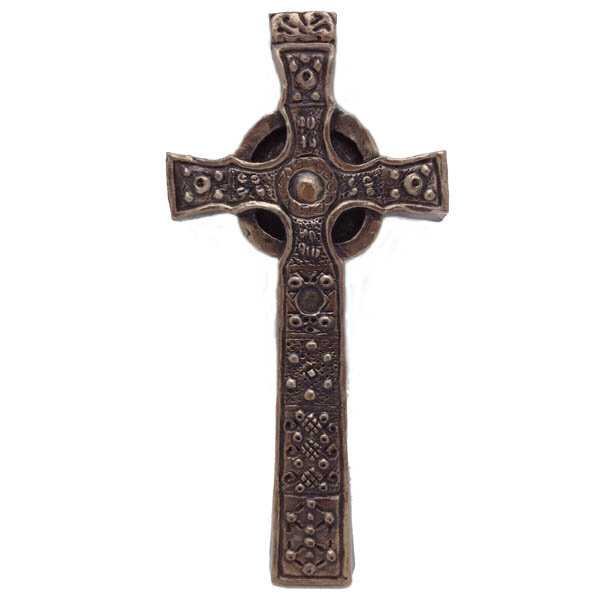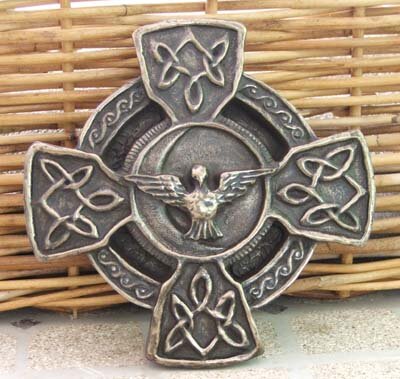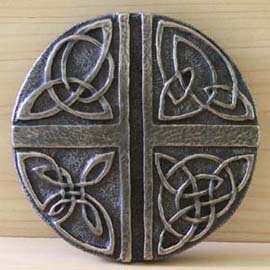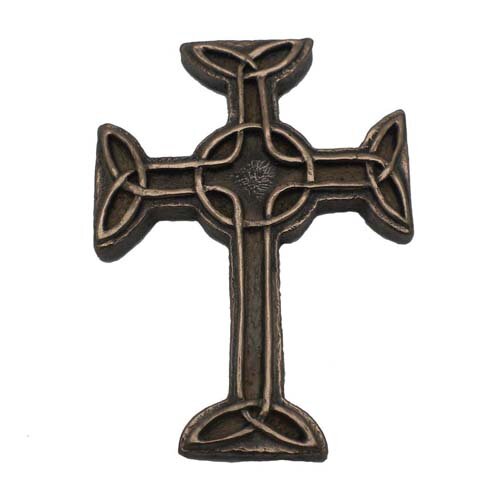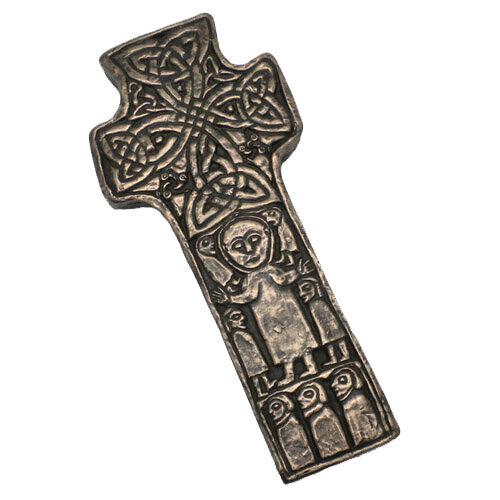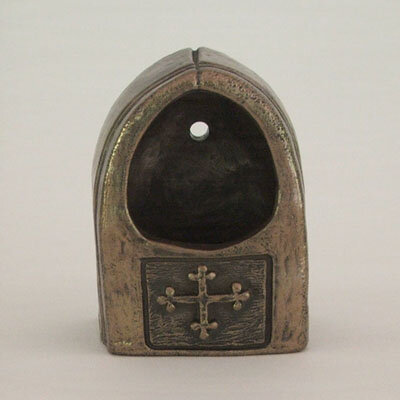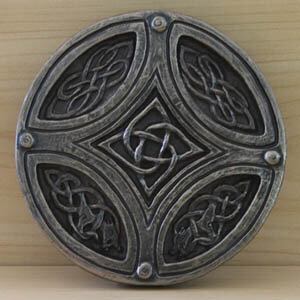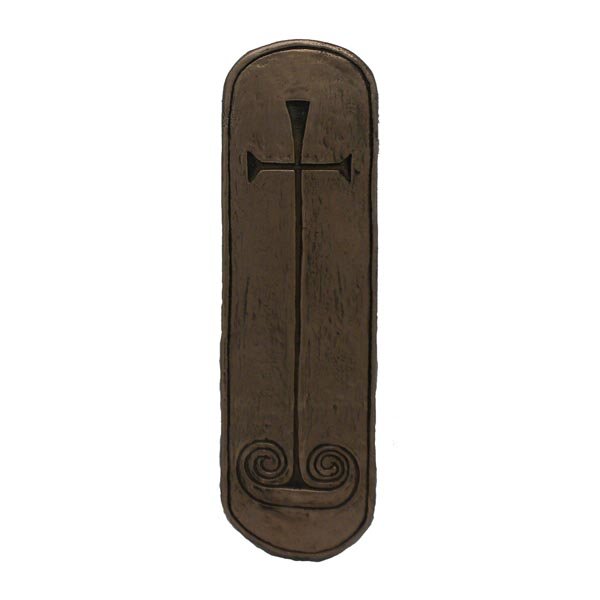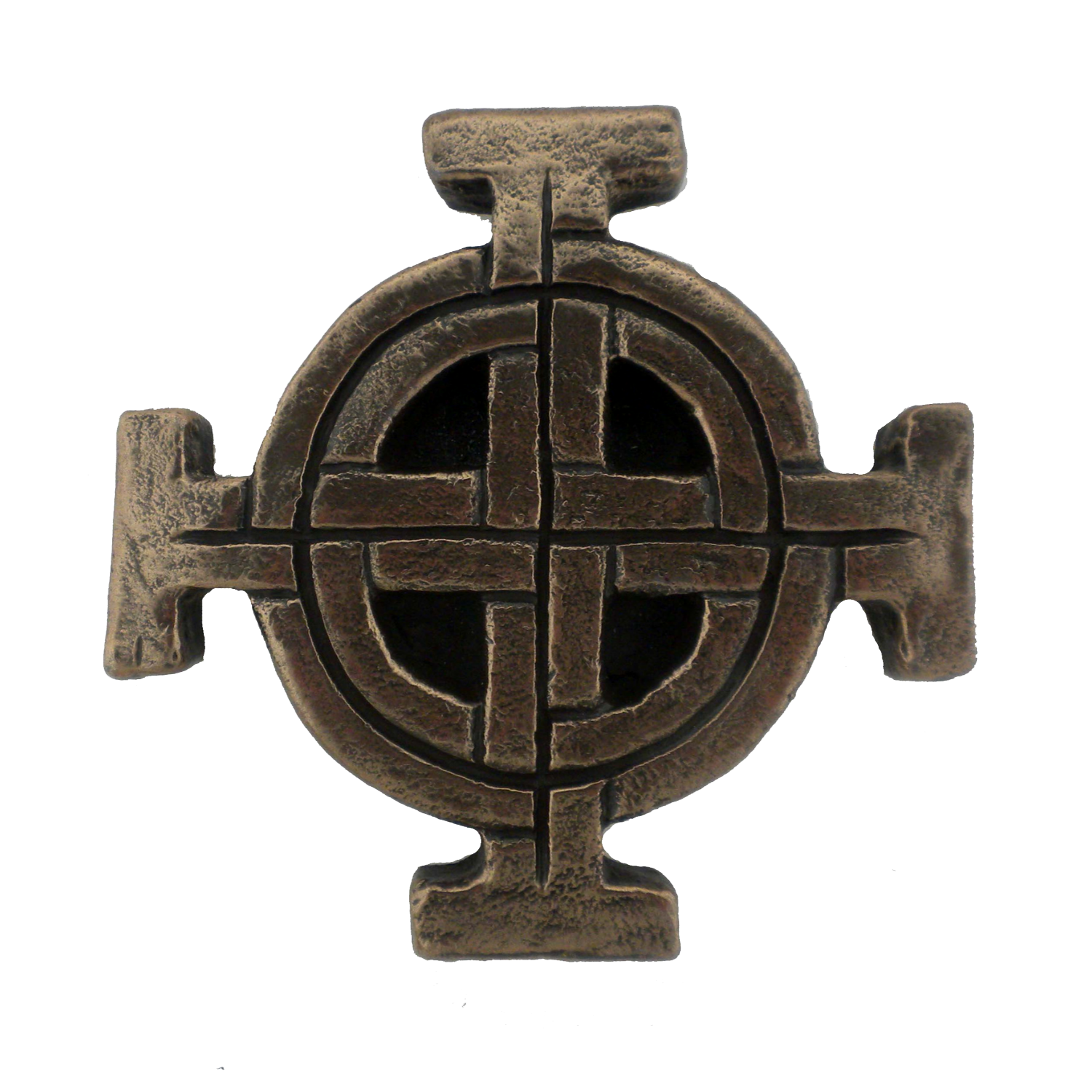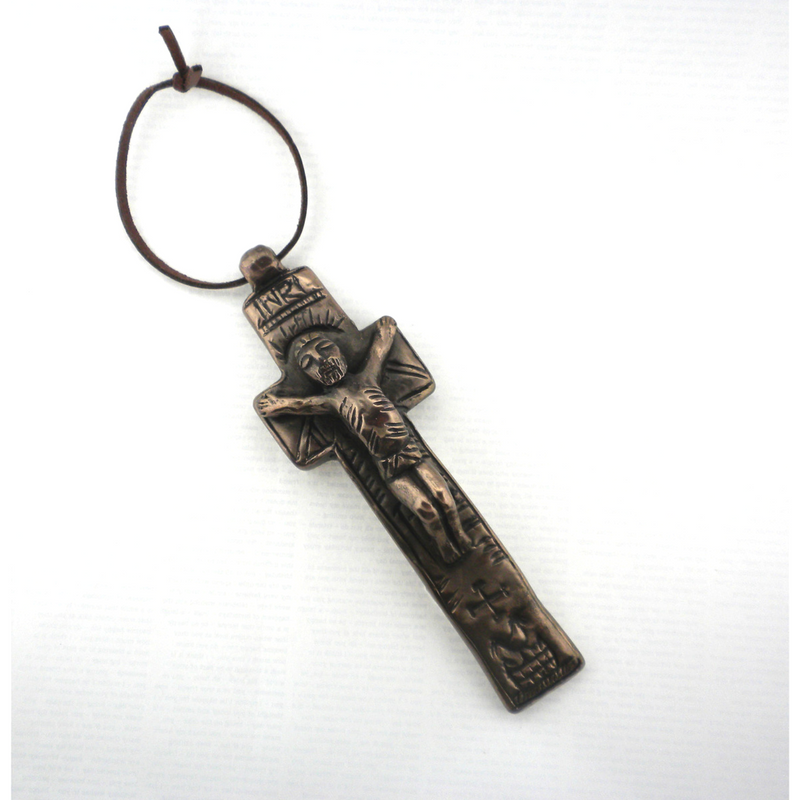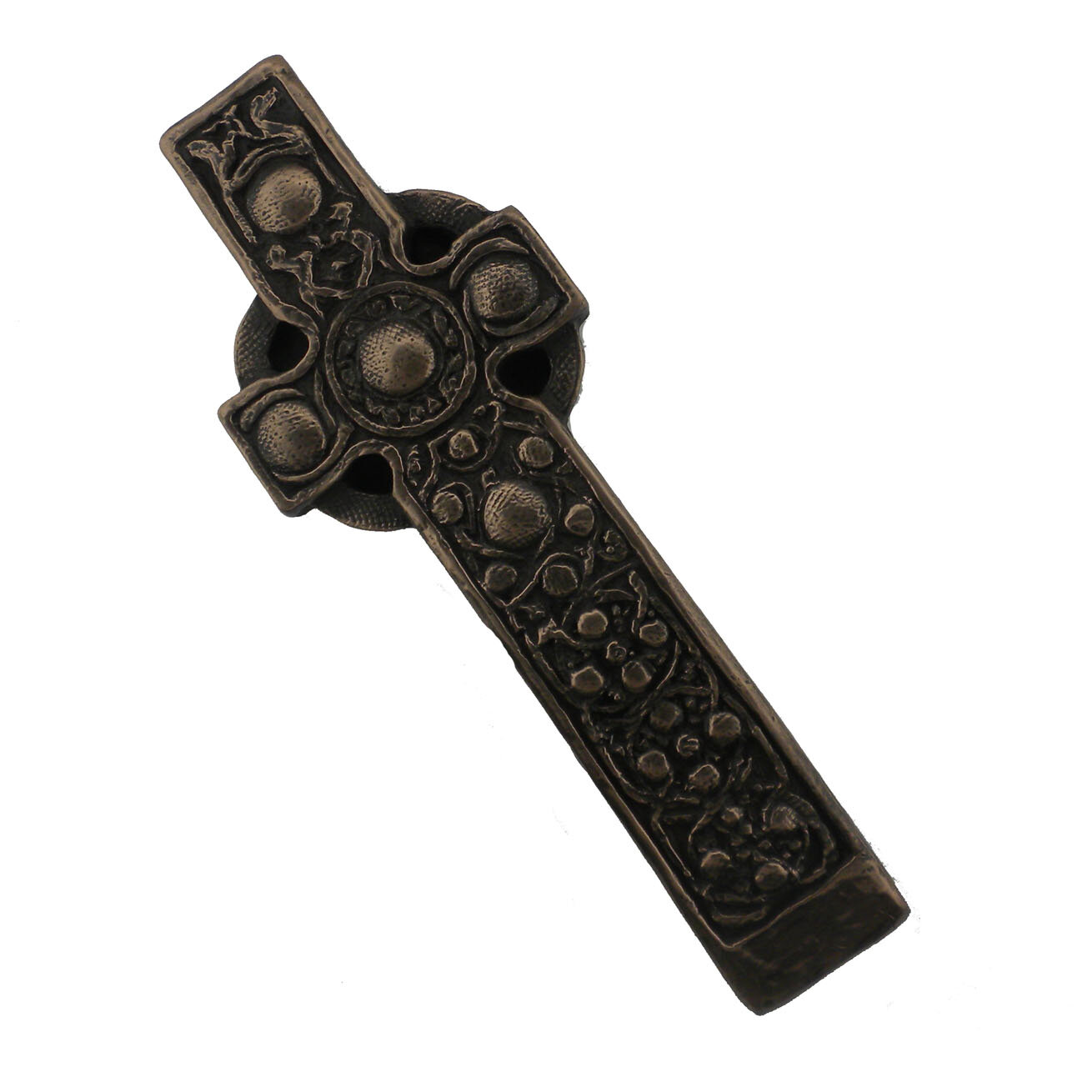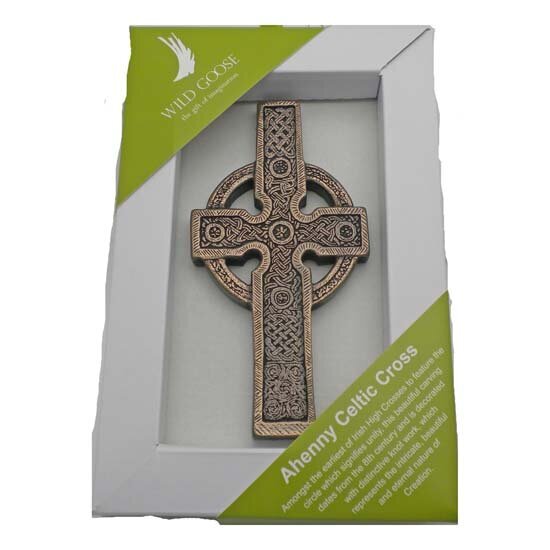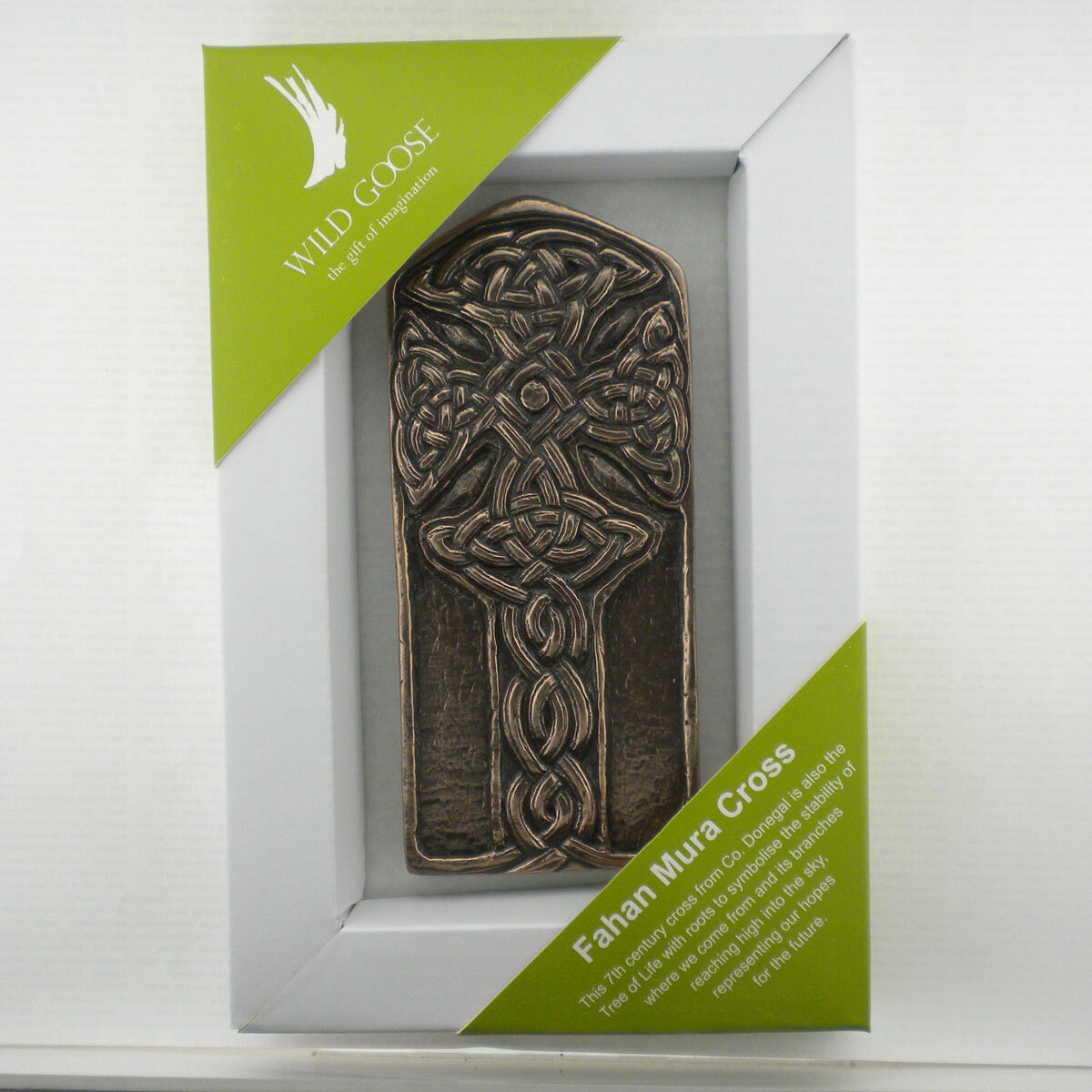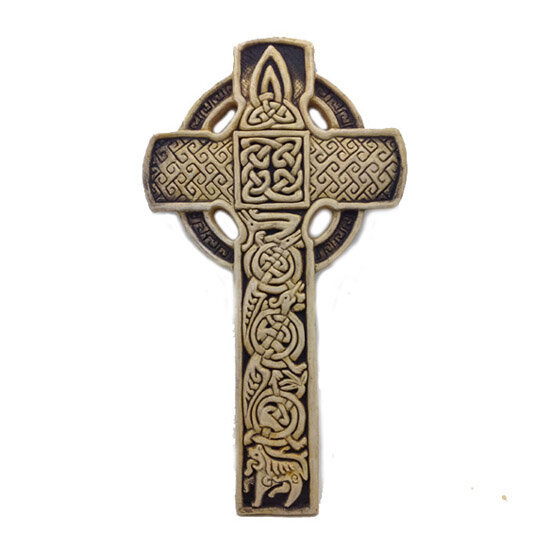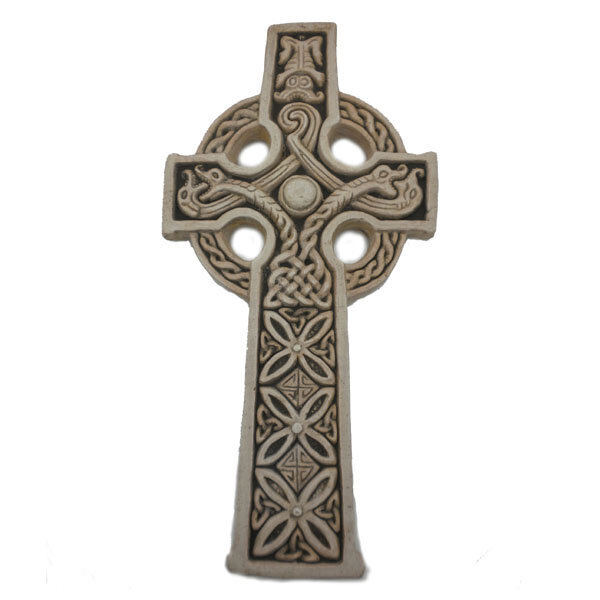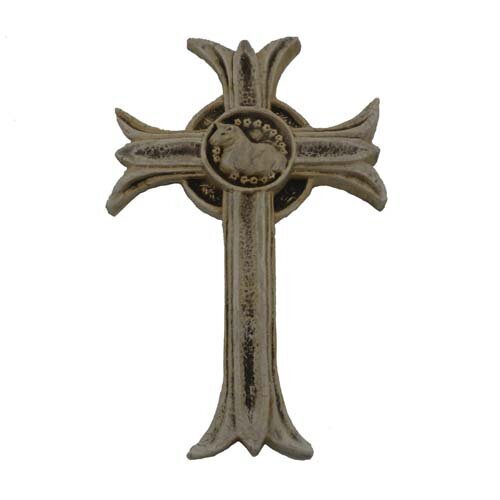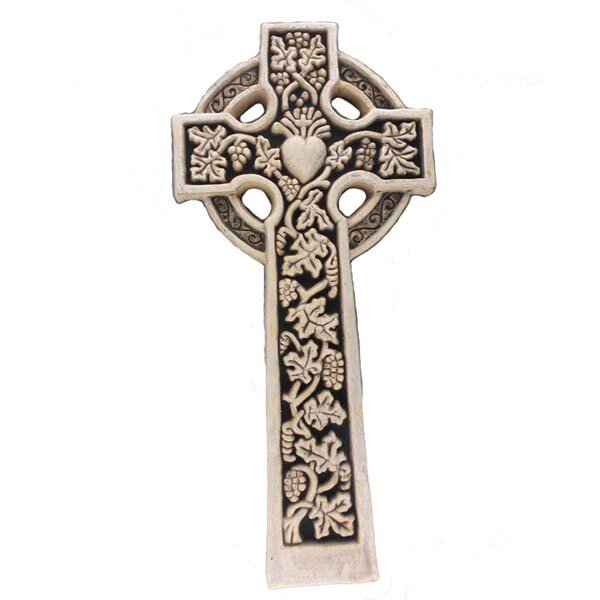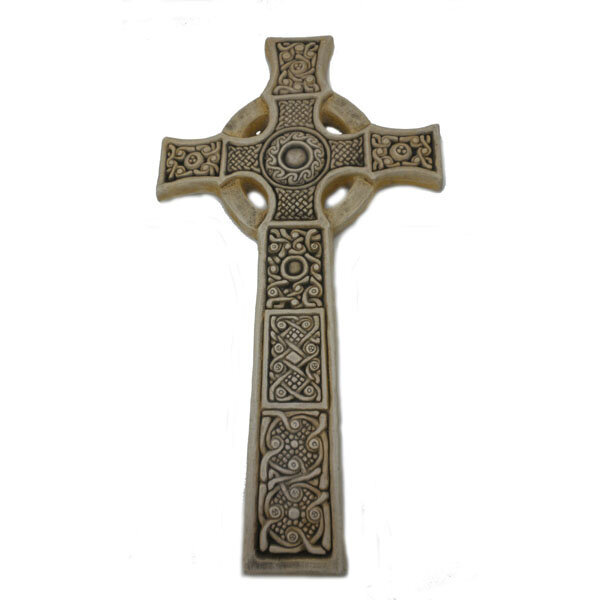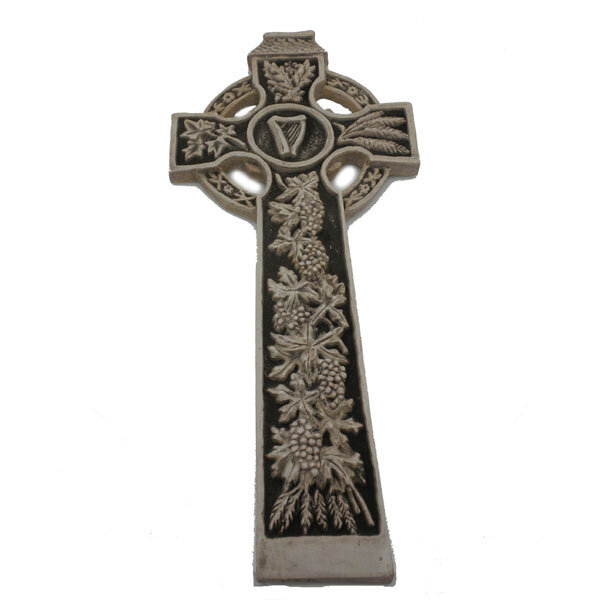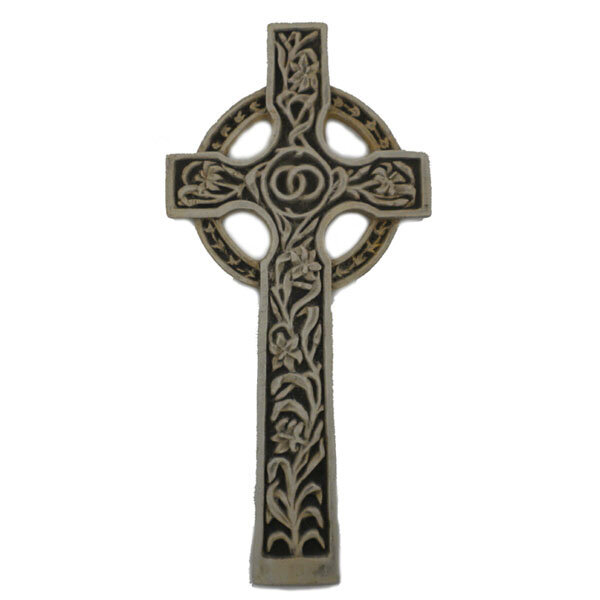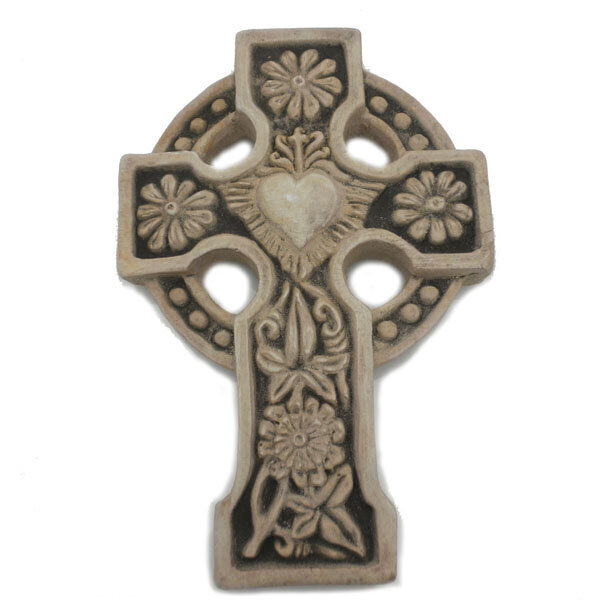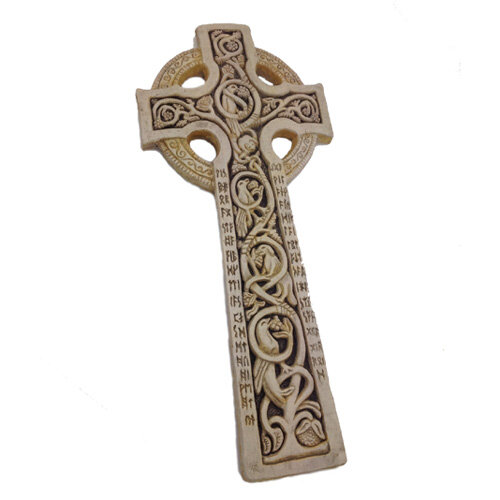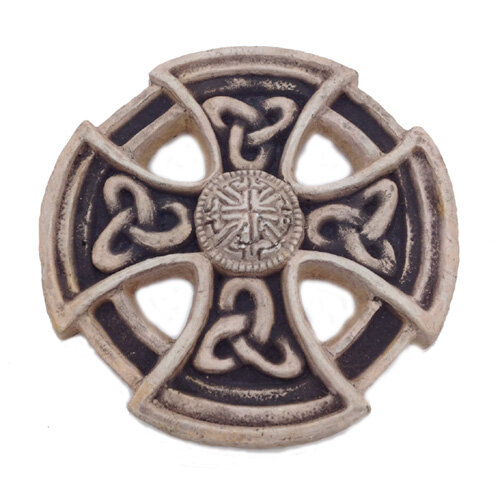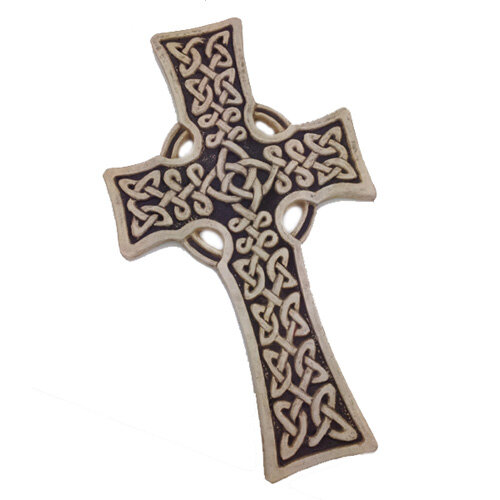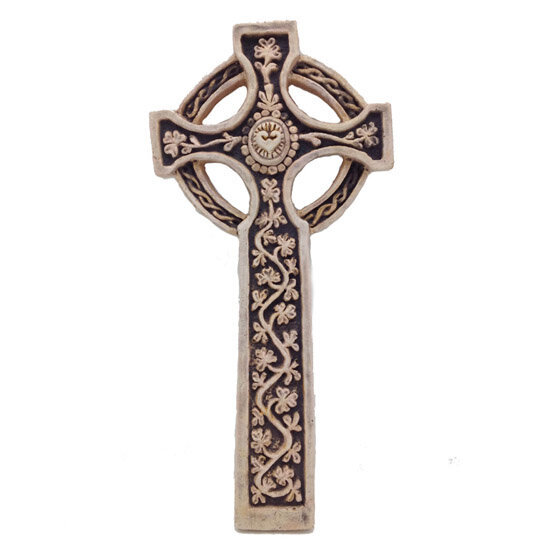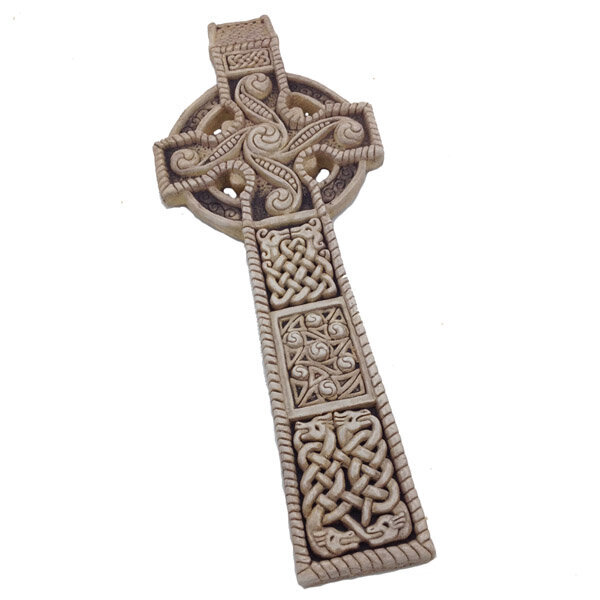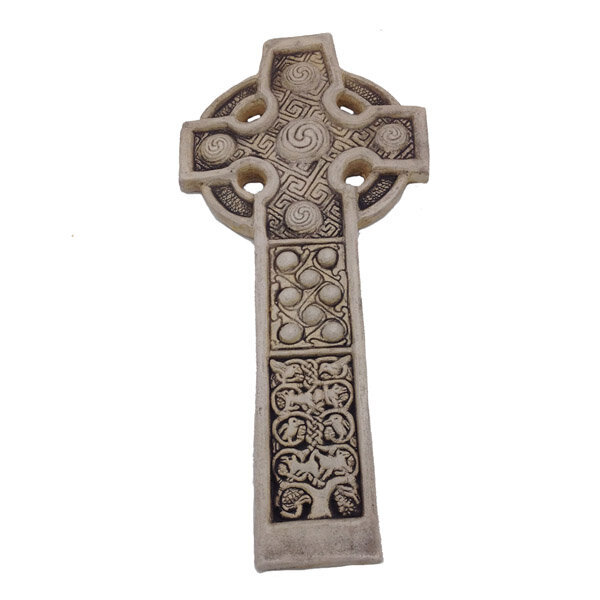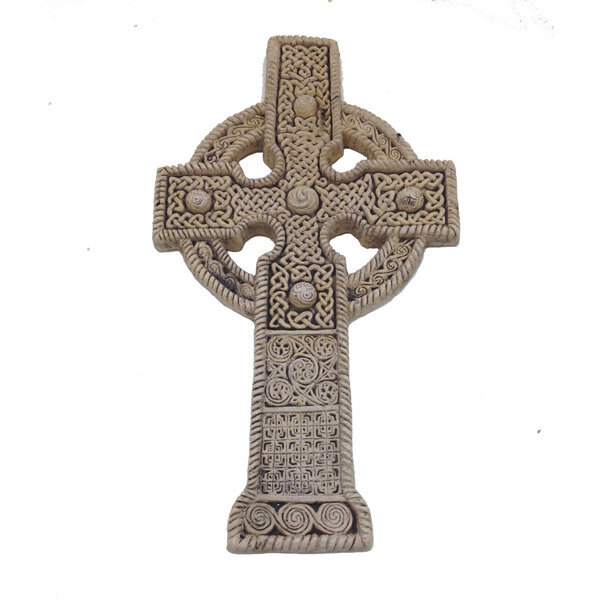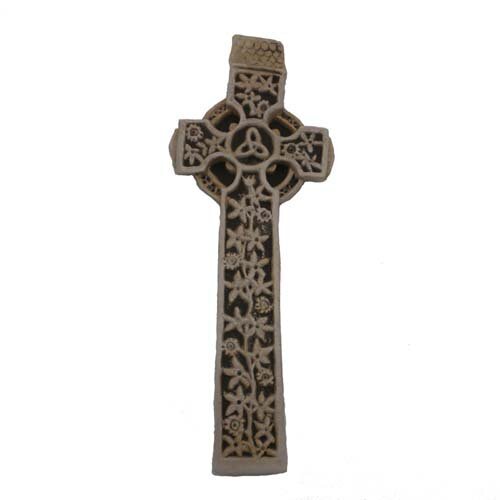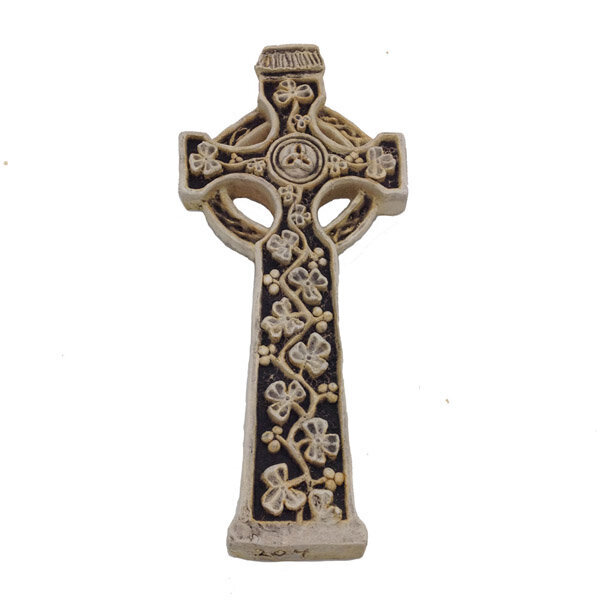Celtic Crosses
About Celtic Crosses
When I began looking into the origins of our Celtic Cross, I was surprised to learn that the basic shape ( a cross with a circle around it) can actually be traced back to the Egyptians. It appears in their history as a hieroglyphic which was determined to mean simply “life”. While it is not clear how the cross found its way to Ireland and Britain, there is a popular legend which gives credit to St Patrick who was thought to have combined the Christian cross with the circle representing the sun. There is also a more practical line of thinking that the circle was added by artisans who carved them simply to make them sturdier and less vulnerable to damage.
What we do know that they first began to appear in Ireland and Britain around 900 A.D. The first two areas we see them are Ahenny in Tipperary Ireland and Iona an Irish monastery located off the coast of Scotland. It was first used as a religious marker for churches and such, then became a the sign of important places including the birthplace of prominent people and even public markets.
While there are many places all throughout Ireland that you will find the Celtic Cross the most predominant of these will be the graveyards. Beginning in the 1850’s it became the fashion to have a carved cross to mark your final resting place or as a monument to someone or something. The style of the Celtic Cross as we know it today has immigrated with the Irish all over the world especially in places like Australia and the Americas.
Today the Celtic Cross has become a widely popular symbol of Irish/Celtic pride. People all around the world who identify with the Celtic tradition show their pride by wearing the cross in many ways. Some wear as part of their clothing ensemble, others have the cross as a design in the jewelry they wear, this has become particularly popular with wedding rings.
Some of our Celtic Cross rings can be seen here: Trinity and Celtic Cross Wedding Rings . Even more popular than jewelry has become the use of the Celtic Cross in tattoos, incorporating the symbol as part of the design or simply having a cross itself as the entire tattoo image.
Celtic Cross Jewelry
FADO Jewelry has the Celtic High Cross available in sterling silver.
Ahenny Cross: Ahenny is an unusual place - a graveyard with two ancient and striking Celtic Crosses. The crosses differ from most ancient monastic crosses - there is nothing in the Annals or in any other record to explain why they are there.
According to local legend, there were once three crosses in Ahenny, but that the most beautiful was stolen and lost at sea. Local legend also has it that the crosses marked the burial place of seven bishops of the early Irish Church. This in itself would be unusual as Irish High Crosses typically living persons and were situated in thriving monastic communities, not burial sites.
Scholars believe that the Ahenny crosses were carved at an early date, perhaps in the 8th Century. FADO's cross is a reproduction of the North Ahenny Cross. The faces have no scriptural carvings but are most beautifully decorated. The center of the cross are five projecting bosses, reminding us of St. Martin's cross in Iona, and indicating the importance of Ahenny in the past. The head and shaft of the cross are covered in an elaborate spiral, interface and fret designs. Dr. Peter Harbison in his scholarly work "High Crosses of Ireland" describes the head of the west face as "covered like a spider's web with a single panel of intricately composed coiled spirals". The faces and ring of the cross are surrounded by a high relieve rope molding adding. The rest of the decoration is in low releif suggesting that the cross must have originally been colored. It is only through coloration that the impressive detailed work of the sculptor could have been fully appreciated.
Cross of Ardboe: The beautifully carved high crosses of early Christian times are unique to Ireland and Britain and are famous throughout Europe. The finest of them are the Scripture Crosses which tell the Bible story in a series of detailed panels. The fullest series of scenes is on the tall cross at Ardboe in Tyrone, on the west shore of Lough Neagh, not far from Coagh.
The cross at Ardobe is unusually tall, standing some 5.6 meters high. It is profusely decorated with abstract designs and a series of figure sculptures which are treated with exceptional detail and fullness. The balance between form and decoration, between ornament and narrative, and the delicate execution of the abstract design, contrasting with the robust and lively realism of the figure sculpture, combine to set this cross amongst the most distinguished of Irish monuments.
The East face is distinct. It features Daniel between two rampant lions, the Sacrifice of Isaac, the Children in the Fiery Furnace, Adam and Eve, two souls in scales above the flames of Hell, the Twelve Apostles surrounding Christ in Judgement. The South face features Old Testament Scenes including Cain and Abel, and the life of David, including David with an open sling before Goliat on his knees. The North face displays New Testament scenes, including the Baptism of Christ and the Massacre of the Innocents. The West face also features New Testament scenes, including the Adoration of the Magi, the Last Supper, Christ entering Jerusalem, the Arrest of Christ and the Crucifixion.
The cross is one of the most beautifully sited of all the High Crosses of Ireland. It is approached by a narrow road where it stands majestic, overlooking the ruins of a church and besides of graveyard which runs down to the shores of Lough Neagh. There is also a "wishing tree" nearby. It is easy to imagine the celebrations that took place here on the day this great cross was completed.
Cross of Durrow: "Before he passed into Britain he build a noble monastery in Ireland which, from the great numbers of oaks is ... called dermach, the field of oaks". That is how an early writer described the founding of the monastery at Durrow by St. Columba - also known as St. Columcille.
Durrow is almost in the center of Ireland. Only a few fragments remain of the buildings that were erected during and after the lifetime of St. Columba who dies in AD 597. One beautiful Celtic Cross remains the cross now known as the cross of Durrow.
At the base of this cross is a barely legible inscription which reads "Pray for Dubtach who erected this cross". Dutach was the head of the columban order between 927 and 938 AD. The cross, in white sandstone, is very sensitively carved. The West face of the cross has the scene of the Crucifixion. The scenes below probably represent incidents in the Passion. At the foot of the cross, there are soldiers at the tomb. The East face shows the triumph of Christ - Christ in Judgement. Nearby is David with a harp or lyre. His psalms were recited almost continuously in the monasteries so he was a very revered figure. On this face there is also a representation of the sacrifice of Isaac and at the bottom three figures with angels. Is this the Trinity, or the Holy Family? It may indeed be both. There are many beautiful panels of varying interlace design. This was a most important cross, a sign of the importance of Durrow.
We get a further glimpse of the importance of the monastery of Durrow in the Long Room of the library of Trinity College, Dublin. Many visitors go to see the Book of Kells with its magnificent designs and lettering. Not so many know about the Book of Durrow, a copy of the Gospels made almost a hundred years earlier that is also on display in the Long Room. It is a smaller carefully planned volume. There are "carpet" pages of design facing the opening pages of the Gospels, beautiful initial capital letters at the beginning of each Gospel and a full page symbol for each of the Four Evangelists.
Moone Celtic Cross in Co. Kildare is the site of the early Columban foundation – “Moin Cholum Cille.” You can see the tall slender Celtic Crosses at Monasterboice standing where the monks placed them.
The Cross of Moone was lost for centuries, buried and in pieces. In the middle of the 19th century, just after the Great Famine, a local mason, Michael O’Shaughnessy, was moving slabs of stone from the ruins of the abbey when he unearthed the base and head of the cross. Thankfully he recognized their importance, and they were set up near the place they were found at the south east of the ruined Abbey Church.
Years later when workmen were digging a grave in the grounds of the ruin, the shaft of the cross was uncovered. Later still, in 1893, the pieces were skillfully put together by three O’Shaughnessy brothers, sons of Michael O’Shaughnessy who first found parts of the cross forty years before and lived to see the cross erected.
The Cross of Moone probably dates from the early 9th Century. It appears to be in the tradition of the midland crosses, the prototypes of the great crosses carved and erected in the Northern Province in the latter part of the 9th century and the early 10th century. It has the ringed head which we all associate with Celtic Crosses.
In the Crucifixion scene on the base, the figure is draped but, unusually, the spear is shown piercing Out Lord’s right side. The cross, which is made of granite, probably from Castledermot, also has intricate Celtic curvilinear and geometric designs, as well as rough-hewn and stylized human figures. Scholars say that it is the first cross on which scenes from the Old Testament occur in a regular program, an important development in the history of Irish High Crosses.
The exquisite overall proportions of the Cross of Moone proclaim its maker a man of outstanding visual artistry.
Carndonagh Cross: This lovely cross, known as the Cross of St. Patrick, is in Carndonagh in the north of Donegal. Originally Carndonagh was a bishopric, said to have been established by St. Patrick himself.
Because this cross does not have the ring that we all associate with Celtic crosses it was thought that is must have been erected in the 7th or 8th centuries - a forerunner of the ringed crosses. Now, however, when scholars consider the quality of the carving they believe that the cross was made in the 9th or 10th century.
Its intricate interlace patterns are similar to the decoration found in the pages of a late 10th century Irish psalter. The figure on the shaft of the West face is thought to represent either the Crucifixion of Christ in glory with his arms raised in blessing. In the early Church the cross was a sign of victory over sin and death so it could represent both. Below the figure of Christ there are figures of three unidentified ecclesiastics.
Other Celtic High Crosses are available online or by special order: Cross of Kells, Cross of Moone, Cross of Iona, Drumcliffe Cross, Cross of Cashel, Cross of Duleek, Cross of Muiredeach, Cross of Scriptures and Cross of Durrow.
Cross of Kells: This Cross of St. Patrick and St. Columba is an authentic copy of the front and back faces of the original cross in Kells, Co Meath Ireland.
Columba, founded a monastic settlement in Iona, an Island off the coast of Scotland in 561. It was plundered repeatedly by Vikings and in 806 the surviving monks moved to Kells. It was here that Ireland’s best collection of High Crosses was assembled. The Cross of Kells, like the other local crosses, is weatherworn but it is still possible to discern its great beauty and unusual features."
The scenes depicted in the panels of the cross are from the Old and New Testaments.
Drumcliffe Celtic Cross: ‘Beloved to my heart also in the West Drumcliffe, at Culcinne’s strand’ This line is from a poem attributed to St Columcille (or St. Columba as he is also known) the founder of the monastery at Drumcliffe. He was born in Donegal, a member of a royal family. He studied at bardic and monastic schools and after his ordination he traveled Ireland and founded several monastic settlements, including Derry, near his own birthplace Durrow and Kells.
On one of his journeys he made a hurried copy of the Book of Psalters belonging to St. Finnian of Moville. A dispute arose about the ownership of the copy and the High King of Ireland Diarmuid gave the famous judgment ‘to every cow its calf, to every book its copy’. Shortly after this event a fugitive from King Diarmuid sought sanctuary with Columcille. Diarmuid’s men pursued him and violating the law of sanctuary, killed him. Columcille responded with anger and called on his royal kinsman for support. There followed a bloody battle at Cuil-Dréinne at which the King was defeated.
Columcille was overcome with remorse. He felt that his copyright argument with the High King had provoked Diarmuid to violate the sanctuary leading to the battle. It is unclear whether he was sent into exile by a Synod or whether exile was a self-imposed penance – in any event Columcille left for Scotland where he founded more wellknown monastic settlements. Columcille made one famous return journey to Ireland to the Council of Druim Ceat in Co Meath.
He visited Clonmacnoise and on his journey up the West coast of Sligo he founded the monastic settlement of Drumcliffe not far from the scene of the fateful battle. He is said to have left the bishop’s crozier there as a sign of his love.
The magnificent cross erected there later is a tribute to the family of Columcille who were patrons of the Church for generations. The cross has fantastic animals in full relief as well as Scriptural scenes. The grave of the poet William Butler Yeats is nearby. It is marked by a stone which bears his epitaph ‘Cast a cold eye on life, on death, Horseman pass by’.
More Celtic Cross Jewelry
Celtic Crosses by The Wild Goose Studio
The Wild Goose Studio handcrafts several Celtic Crosses. These crosses are handmade in Ireland by skilled craft-workers using a cold cast method. The crosses have a shell of pure bronze backed by a resin and ceramic core. These Crosses are replicas of Irish Crosses or heritage-inspired crosses of Irish design.
Glendalough Cross: Glendalough Celtic Cross from St. Kevin's Church in the beautiful valley of Glendalough, Co Wicklow. The cross is the most ancient and powerful of symbols: the encounter of the vertical with the horizontal, the feminine and masculine, the ying and the yang. The circle of the Celtic Cross implying infinity gives it a cosmic dimension. The carving by Kathleen Smyth captures the serenity of the original.
St. John's Cross: St. John Cross, Isle of Iona - This, one of the first stone high crosses was a sculpting achievement; it assimilated metalworking, devised a ring to support the huge 7' cross arm, and effected a theological statement. The ring, a simple symbol of the unity of all things, a concept dear to the Celts, was from now on, to distinguish the Celtic Cross.
Celtic Cross of Peace and Prayer: "Lead me from death to life, from falsehood to truth. Lead me from despair to hope, from fear to trust. Lead me from hate to love, from war to peace. Let peace fill our hearts, our world, our universe." (This prayer is said at noon by people of many faiths.)
Celtic Crosses by McHarp
Each McHarp piece is handcrafted and inspired by designs of antiquity. Each piece also has a reference to the time period and culture it was taken from.
Actual artifacts found across the ancient world inspire each object. McHarp explores the legendary, symbolic or archetypical significance of the items in our selection process. Once selected, the piece is first hand carved in clay, and then molds are crafted for the individual piece.
These pieces are a wonderful architectural adornment in the home as well as in the garden.
Ballyshannon Cross: Ballyshannon is located on the western sea and at the mouth of the River Erne. It is a magical, enchanting area in northwestern Ireland. Families of wild swans swim on the sheltered estuaries. Many of the ancient Irish legends and sagas take place in the area or nearby. This lovely cross designed was found near Ballyshannon. Although several centuries old, it is not one of the ancient high cross monuments of Ireland. At the center is the sacred heart of Jesus with rays of light surrounding it. The outer ring is thought to represent heaven.
Bealin Cross: In Celtic Christianity God is seen in every facet of life and nature. All is sacred - trees, animals, hills, and springs. This viewpoint can be seen in the intertwined animals in their visual arts such as the Book of Kells. The Bealin Cross has similar patterns of animals. On the arms of the cross are key patterns. The Celts, unlike everyone else doing key patterns at the time, put them at a diagonal. The knotwork at the top of the cross is a triad, which symbolizes the Trinity. This cross has been dated at about 800. An inscription on the opposite side reads "Pray for Tuathgall who caused this cross to be made". An abbot of Clonmacnois of this name died in 810 where the cross is thought to be from.
Quin Cross: Although very old, this cross is not one of the ancient high crosses of Ireland. It does, however, echo the shape and design of those magnificent ancient monuments. The Harp Cross is located among the ruins of the Quin Friary and is approximately 11 feet high. Quin was founded as a Franciscan Friary in 1433. It was built in the ruins of a much older anglo-Norman castle. In 1541, King Henry VII dissolved the friary in his campaign to control the wealth and power of the church. Carved into the face of the cross is an Irish harp and scores of shamrocks. Both have become famous symbols of Ireland. The harp figures into many of the old Irish myths. The shamrock is from a legend about St. Patrick that says he used a shamrock with its three leaves to explain the Trinity, the triple nature of God.
